PURE JOY
On board the Ocean Alexander 35 Puro
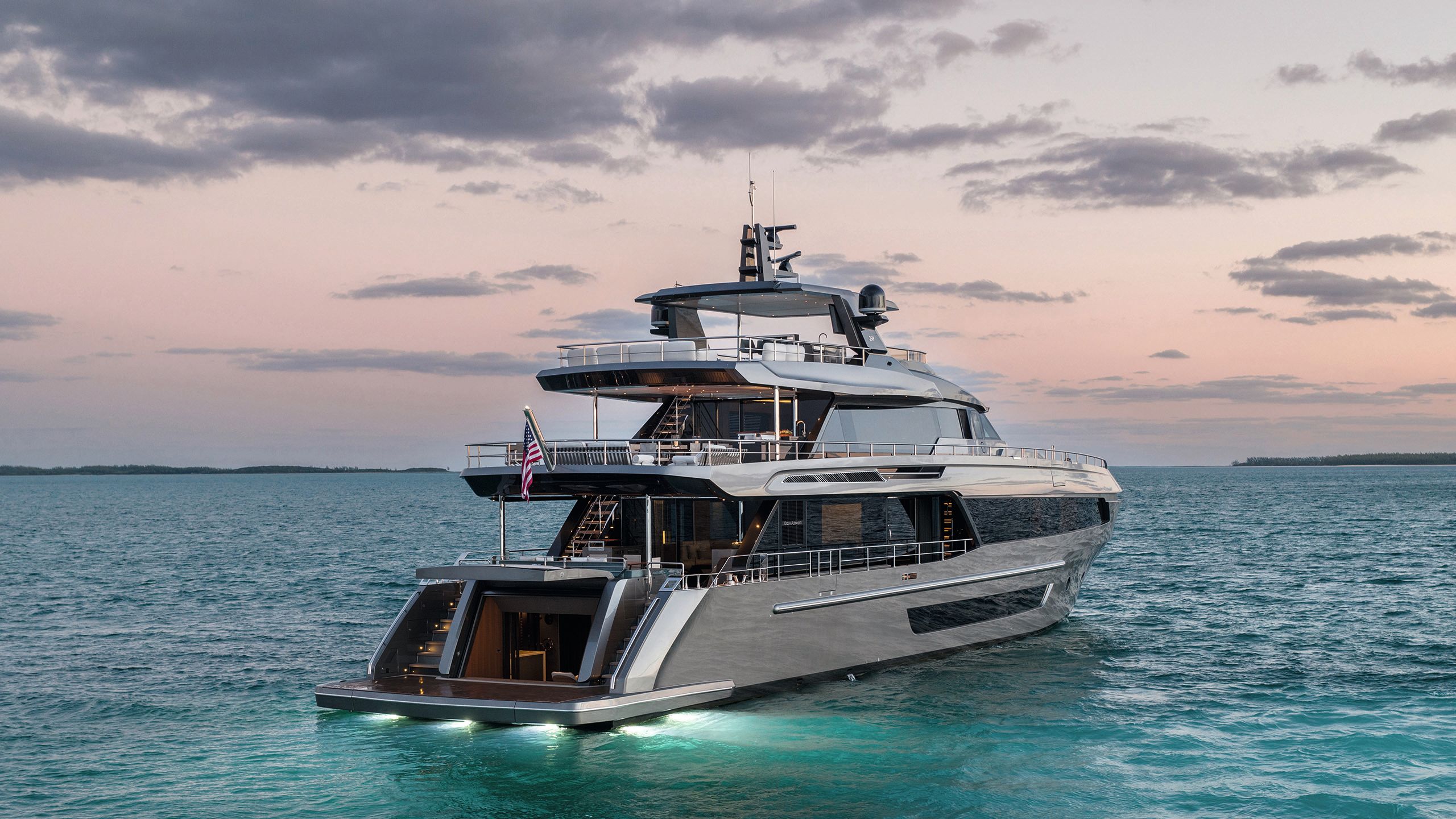
A new offering from Ocean Alexander, the Puro line blends Italian style and American-friendly ergonomics. Cecile Gauert takes her for a ride to Chub Cay
LARSON GROUP
It was eerily silent and dark on the Tuesday following the Palm Beach boat show when I returned to the docks to board the Ocean Alexander 35 Puro. Empty tents flapping in the wind and boxes piled high made the formerly vibrant event look like a frozen carnival. In the middle of it, the 35-metre yacht bathed in golden light was a welcome beacon.
I climbed to the main deck, pressed a button and the saloon door quietly slid open. A quick exchange with the yacht’s designer, Giorgio Cassetta, a guest on board, ascertained I was welcome to settle into the portside twin cabin on the lower deck.
The freshly made bed had lightweight and deliciously soft sheets and a blanket. I promptly fell asleep. I think voices woke me. I rose on my elbows, straining to hear evidence of life on board. Then an unmistakable growl came through the bulkhead as the bow thruster came alive. We were pulling away from the dock.
I joined the crew on the upper deck as we began our 140-nautical-mile or so trip to Chub Cay in the Bahamas. By the time the tenant of the Flagler Memorial Bridge answered Captain Pablo Longa’s radio call to open it, we’d seen the video of the Francis Scott Key Bridge in Baltimore collapsing. It was an eerie juxtaposition. Offering something more cheerful to discuss, I chimed, “It looks like the weather has improved.”
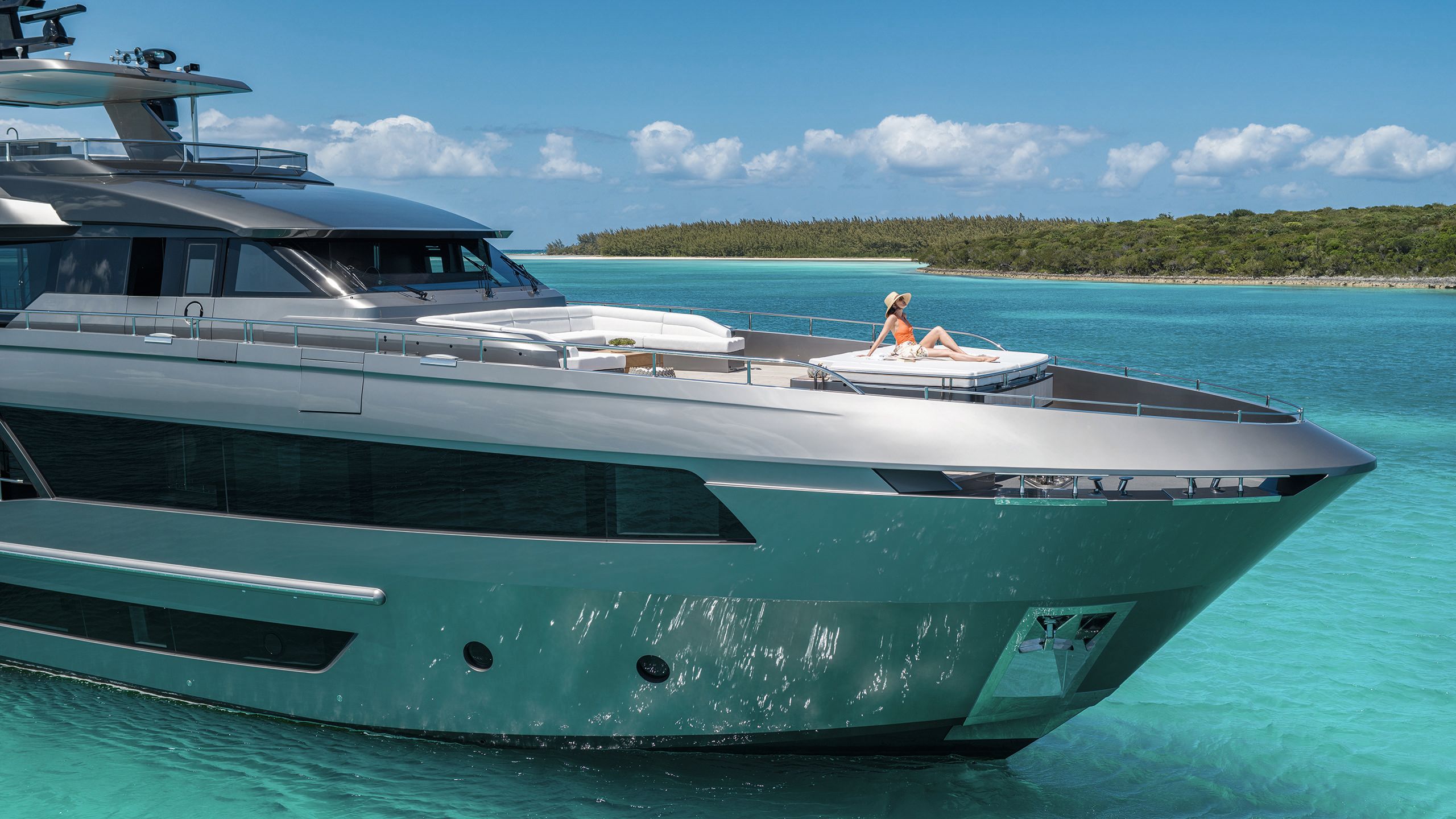
WEFLY AERIAL MEDIA
WEFLY AERIAL MEDIA
“We are not outside yet,” Captain Robert Risher replied, his voice trailing into a verbal suspension point. He’d taken the yacht into the show days earlier through 2-metre seas with 20 knots of wind on the nose from Fort Lauderdale to West Palm Beach.
After the boat arrived, Cassetta proudly shared a video of the 35 Puro riding in these troubled waters. It looked steady and stable even as white spray occasionally reached the bridge deck’s windows. “She sails like a charm, rides super-stable as you can see,” he said.
I was impressed and invited myself for a day trip to Chub Cay in the Berry Islands, a stopover on a trip to Harbour Island where Ocean Alexander was hosting its owners’ rendezvous. I knew it might be rough and salty, and I might get seasick (because I do), but it was too good a chance to pass up.
Visits at the dock, even multiple ones, do not give you the true measure of a boat and Ocean Alexander prides itself on delivering yachts that can handle rough seas. That’s been its foundation since it carved a nice slice of the US yachting business first on the US West Coast where the water is rough and the passages long.
What to make then of this new yacht, the first of a new tri-deck line? She is a semi-displacement yacht in composite with speed built into her, not an explorer. Not one Italian yacht has influenced her look, but a bit of that Mediterranean flair was intentional.
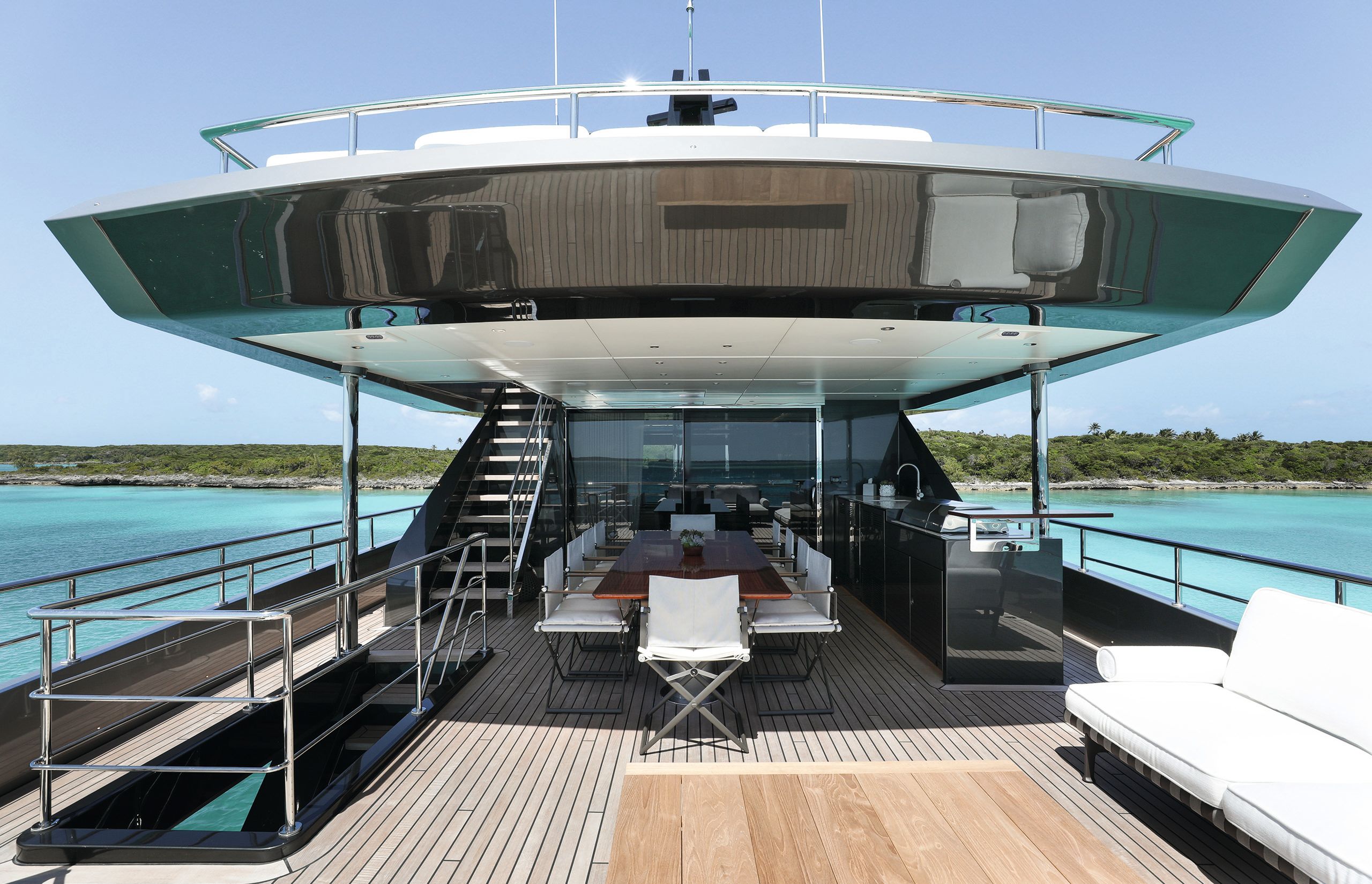
LARSON GROUP
LARSON GROUP
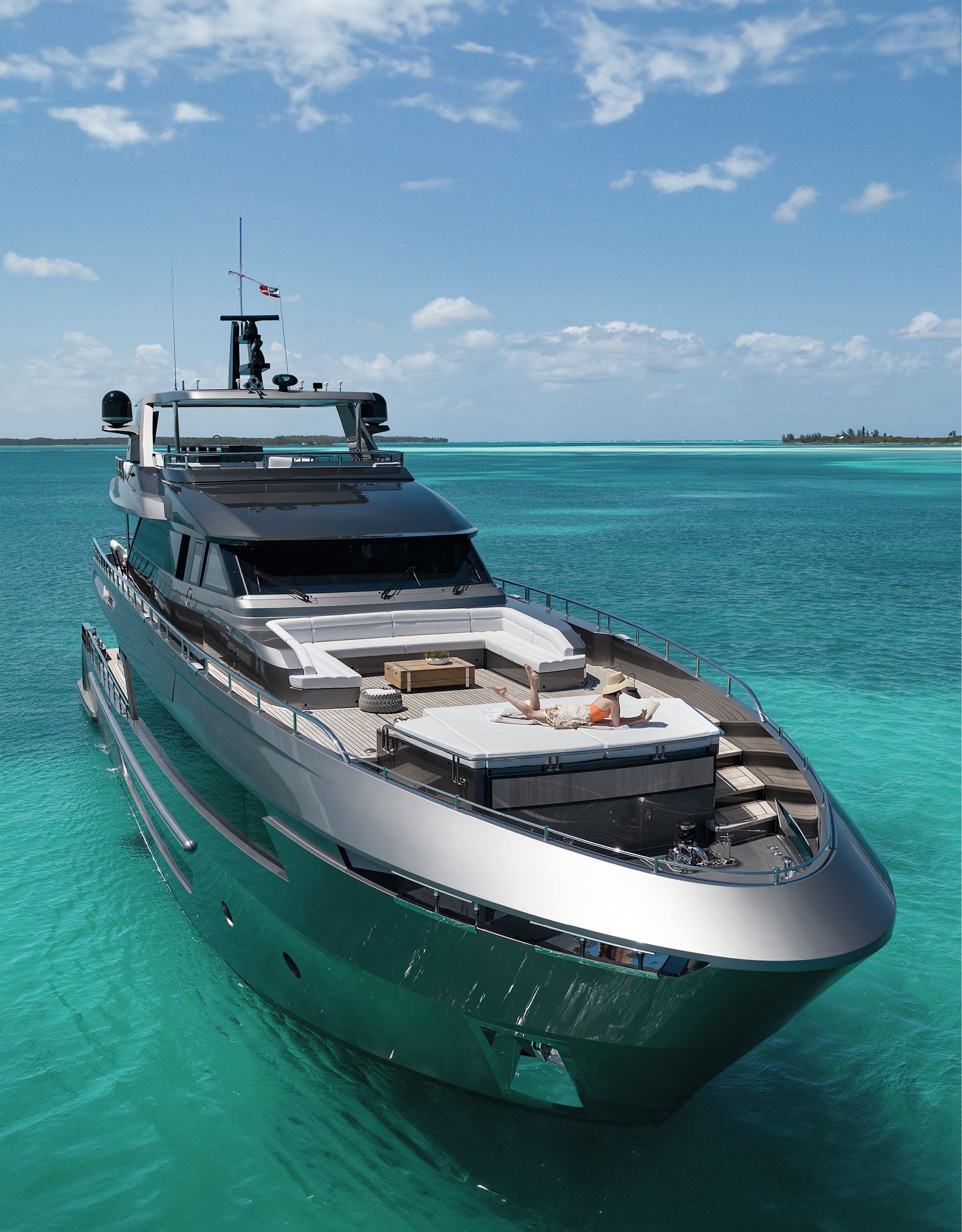
LARSON GROUP
LARSON GROUP
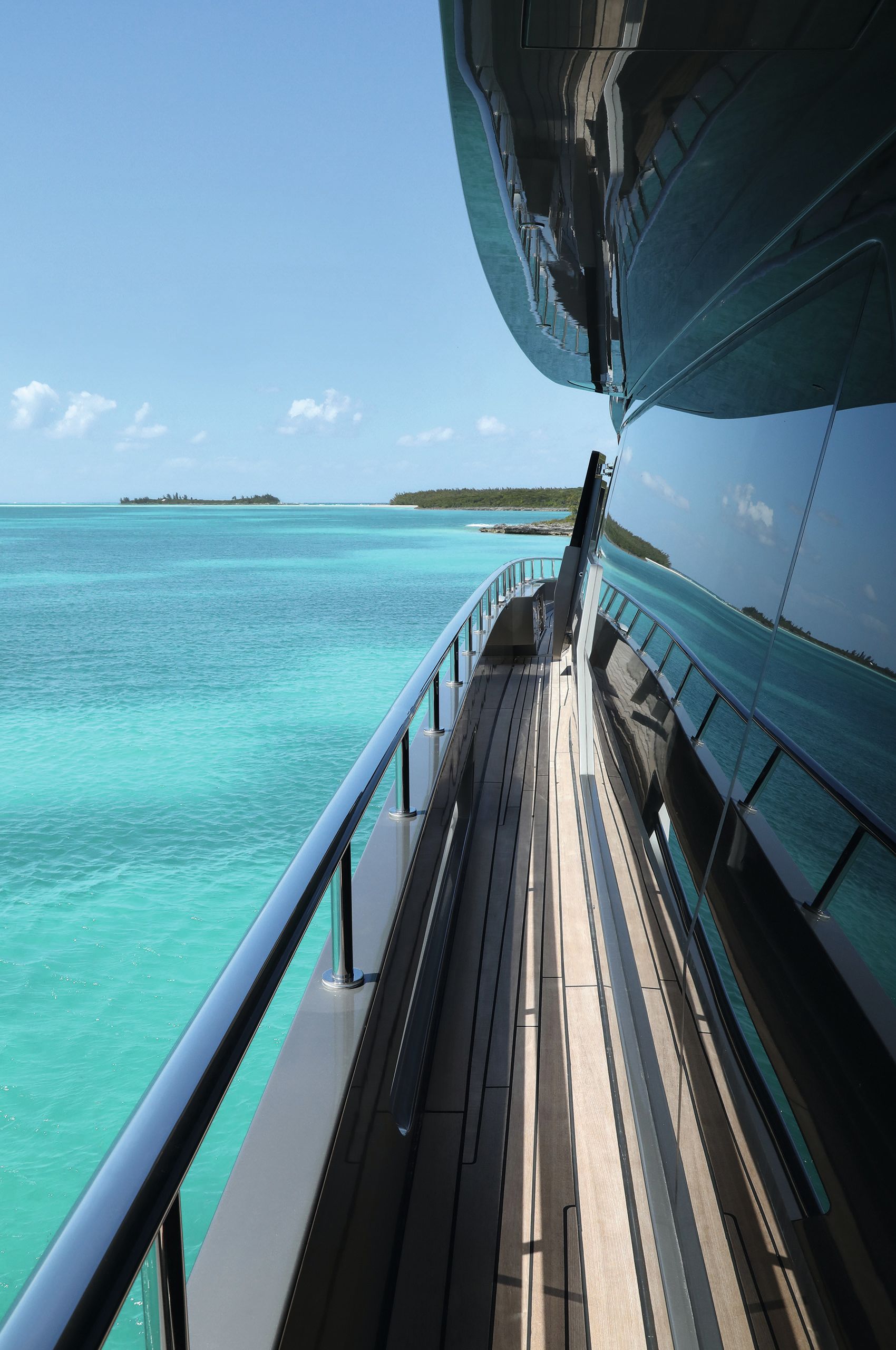
LARSON GROUP
LARSON GROUP
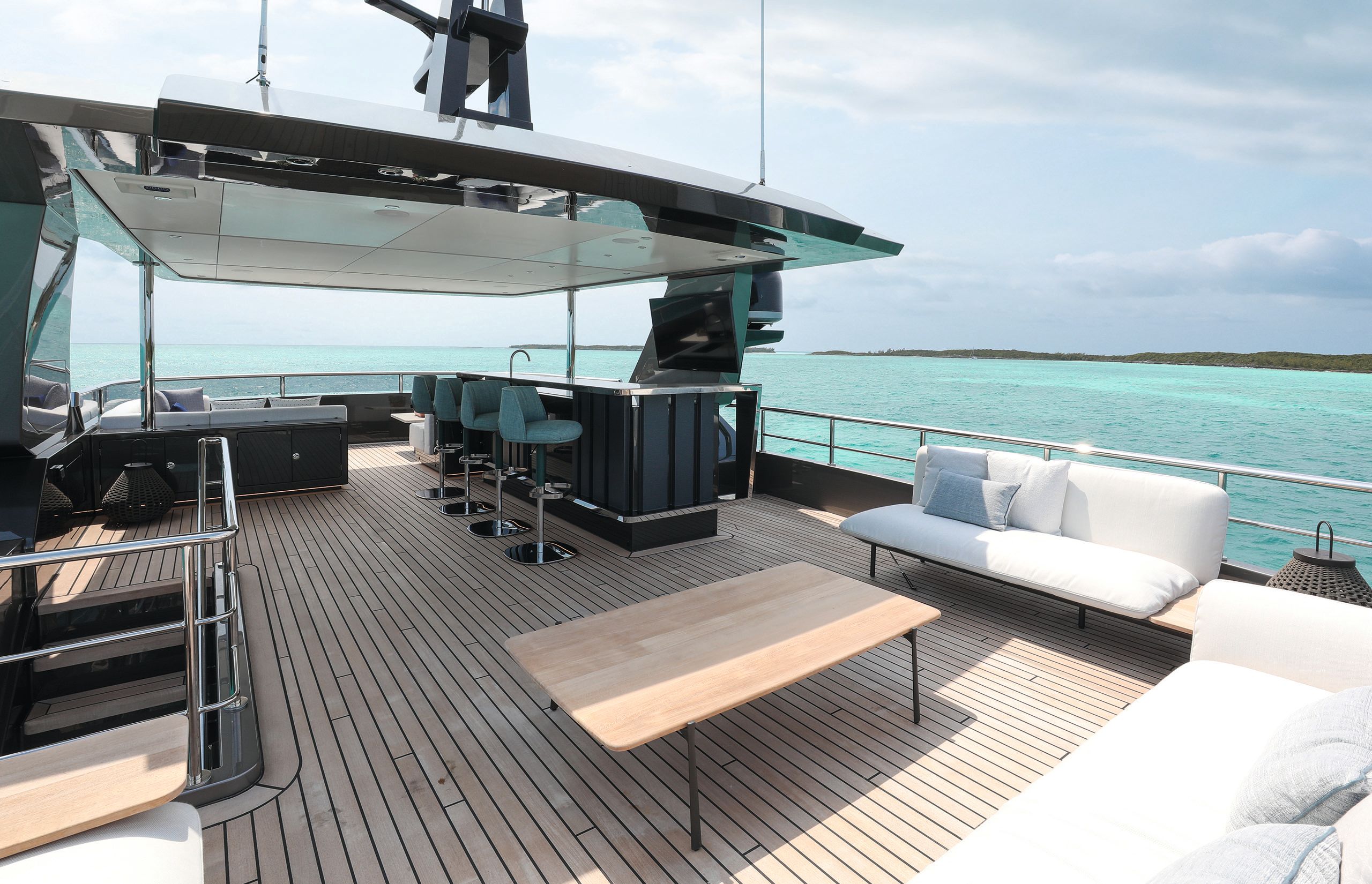
LARSON GROUP
LARSON GROUP
The hull shape is unmistakably Ocean Alexander in the bow flare and in the way the yacht stands tall and powerful on the water. Top right: Making the yacht appear longer than she is, the upper deck is a single long line from the bow tip all the way aft, completely shading the main deck cockpit. Bottom right: the 507 sq ft sundeck features beautifully crafted bar stools and forward and aft lounging space. Top left: the upper deck table seats 10 in the shade
“The brief was to create an international product with a hybrid approach to design, melding Italian cues and American sensibility when it came to execution,” Dan Mundy, Ocean Alexander’s head of global operations, says. “Italian builders coming to the market were missing that understanding of how US buyers use and enjoy their yachts. Pure. Timeless. Yachting. [This] was the core focus.”
The builder has been quite successful with its various lines and the reinvention of some of its bestsellers with designer Evan K Marshall, who also engendered the voluminous Revolution line with its distinctive vertical bow. Again with the Puro, the brand sought to appeal to a new segment of clients and expand the busy builder’s reach in the US and beyond. New hull. New platform. New styling.
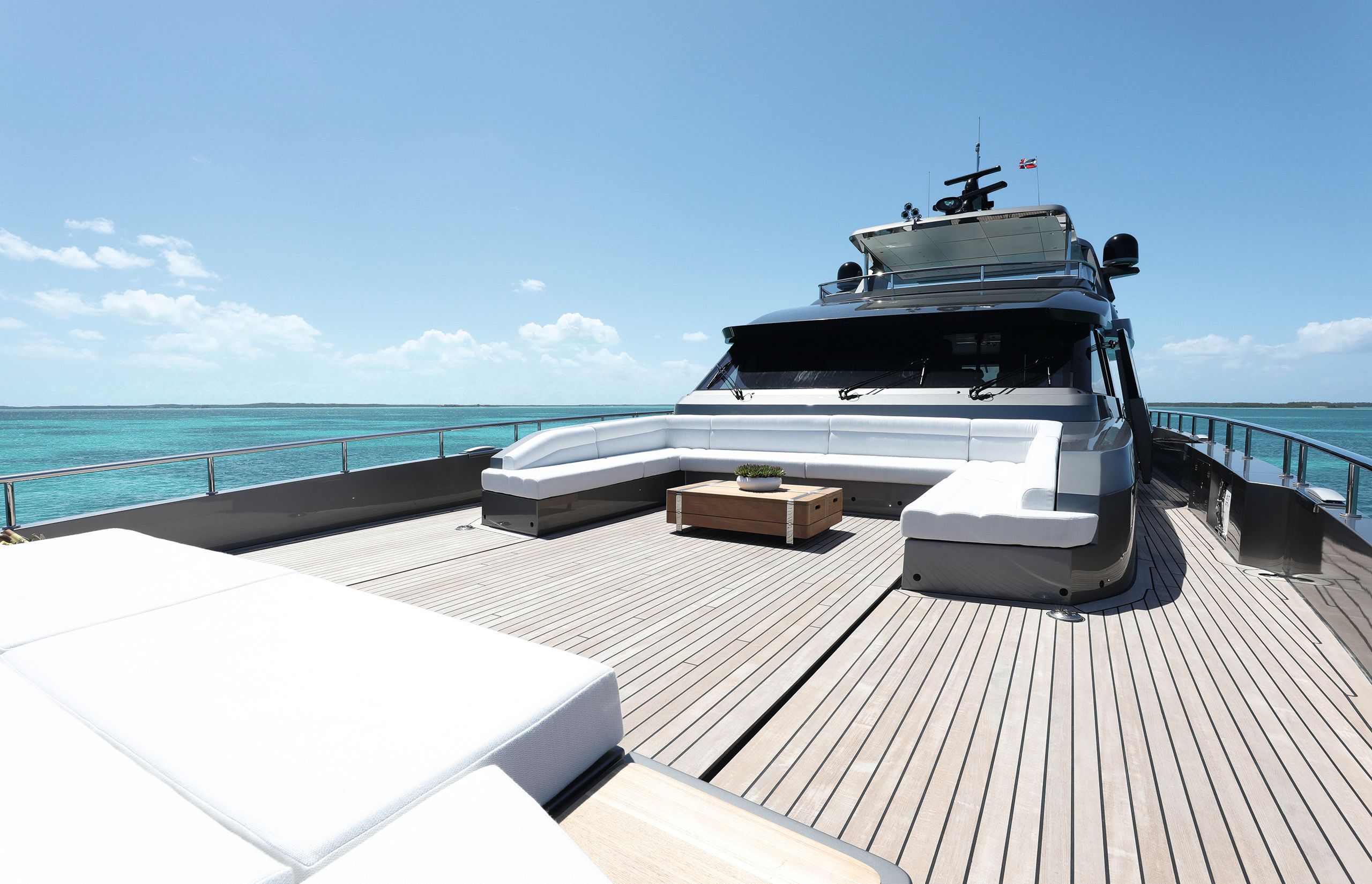
LARSON GROUP Tracks allow the sunpads to be moved forward to cover the pool, “a feature we truly love on this boat,” says designer Giovanni Bandera
LARSON GROUP Tracks allow the sunpads to be moved forward to cover the pool, “a feature we truly love on this boat,” says designer Giovanni Bandera
Among the designers discussed, Cassetta, a prolific designer with production and custom yachts to his credit, got the edge. “We met and had an immediate connection. As we became more comfortable with one another, I can say that we shared a synergy and a very positive view of the collaboration. He listened and took in what we wanted to achieve without any preconceived notion as to how he was going to direct the project. I felt a true collaboration forming and we moved ahead,” Mundy says.
After Covid-19-related delays, by May 2020 the team decided to forge ahead. They worked via Zoom and across multiple time zones — Taiwan, Europe and the US — and that wasn’t easy.
But “the real challenge lay in blending our know-how with the shipyard’s extensive experience, without undermining the substantial work done previously, while sharing our design ambitions without completely disrupting their comfort zone,” says Giovanni Bandera, Cassetta’s lead designer on the project.
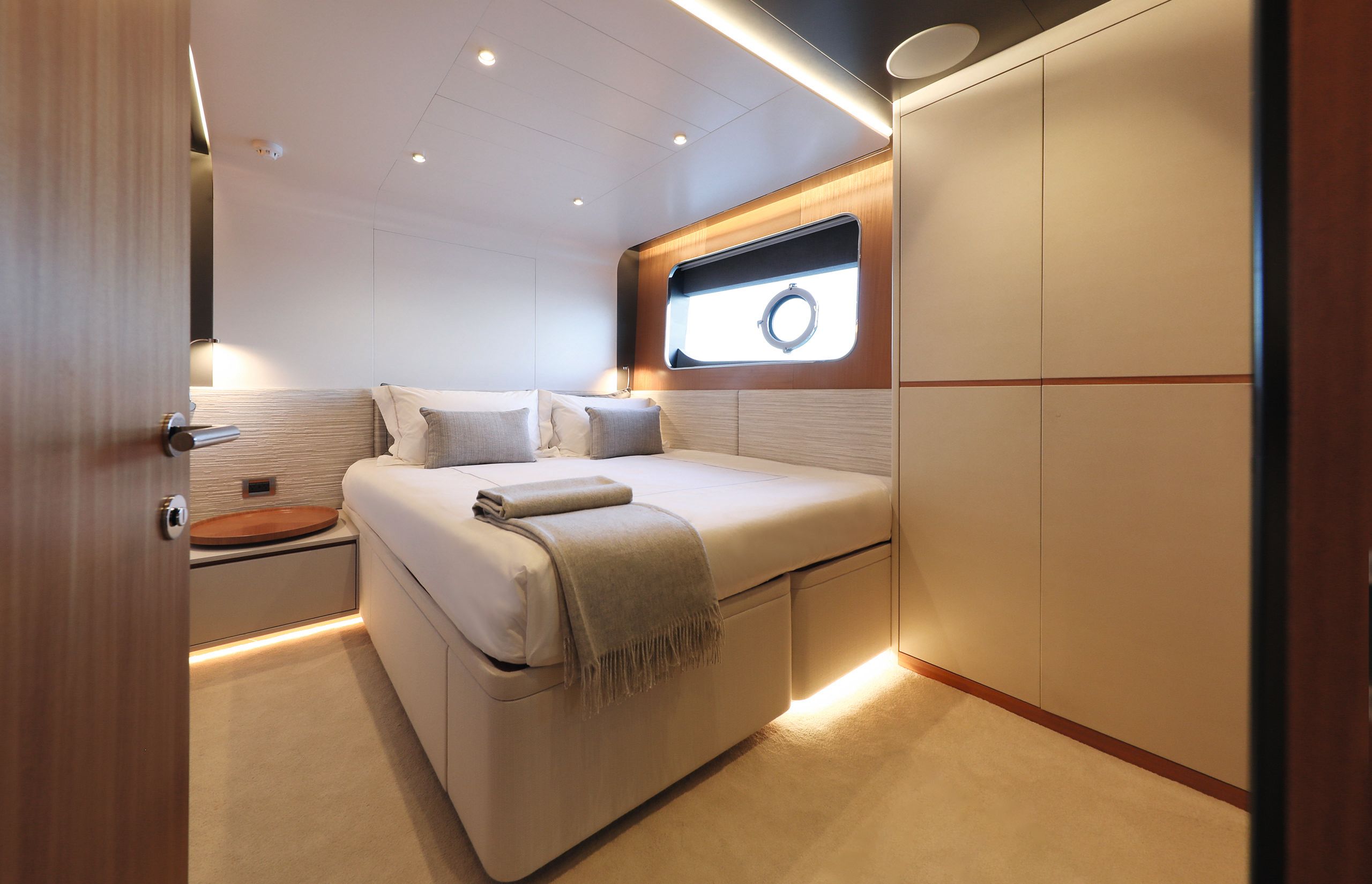
LARSON GROUP
LARSON GROUP
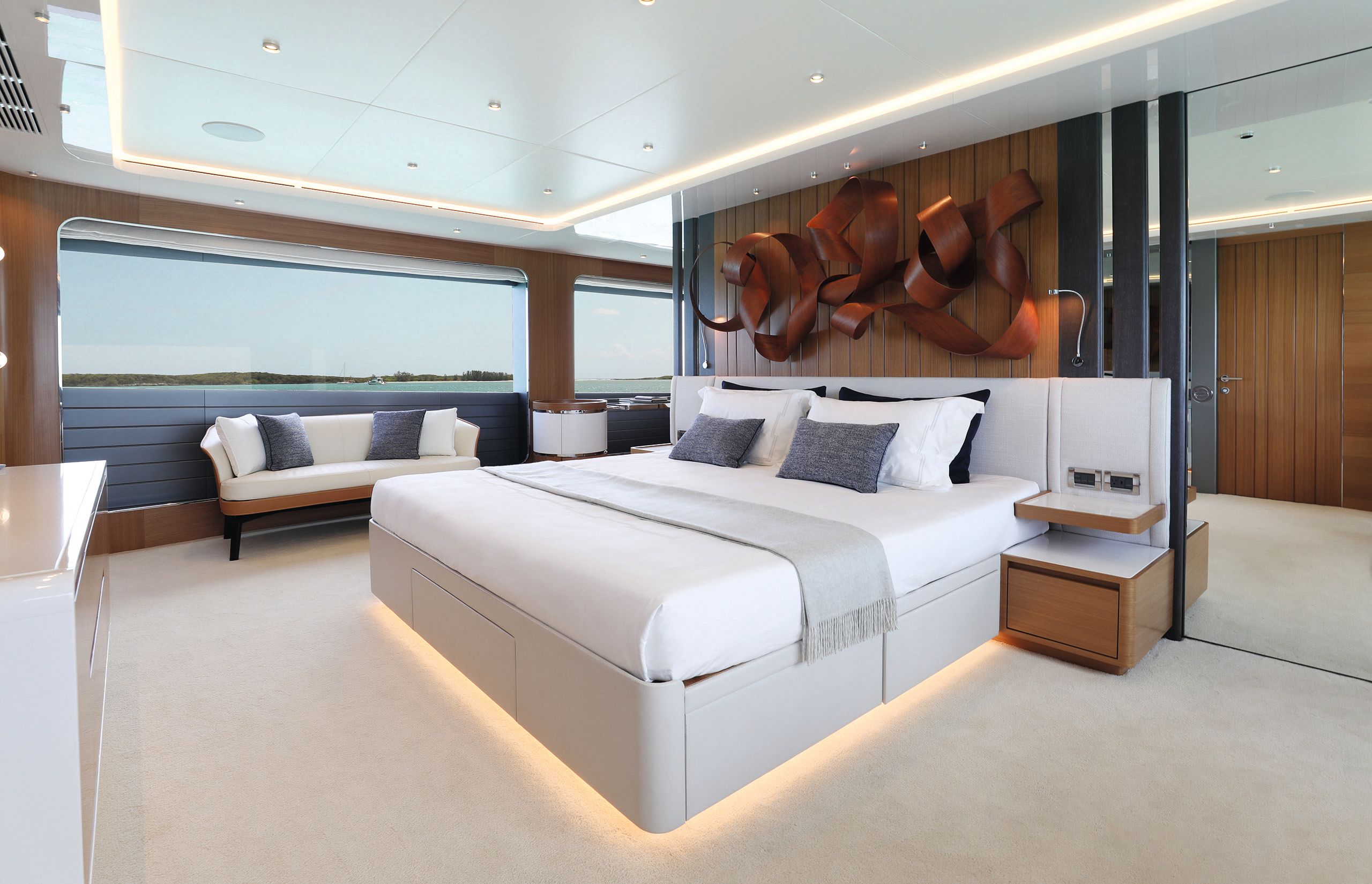
LARSON GROUP
LARSON GROUP
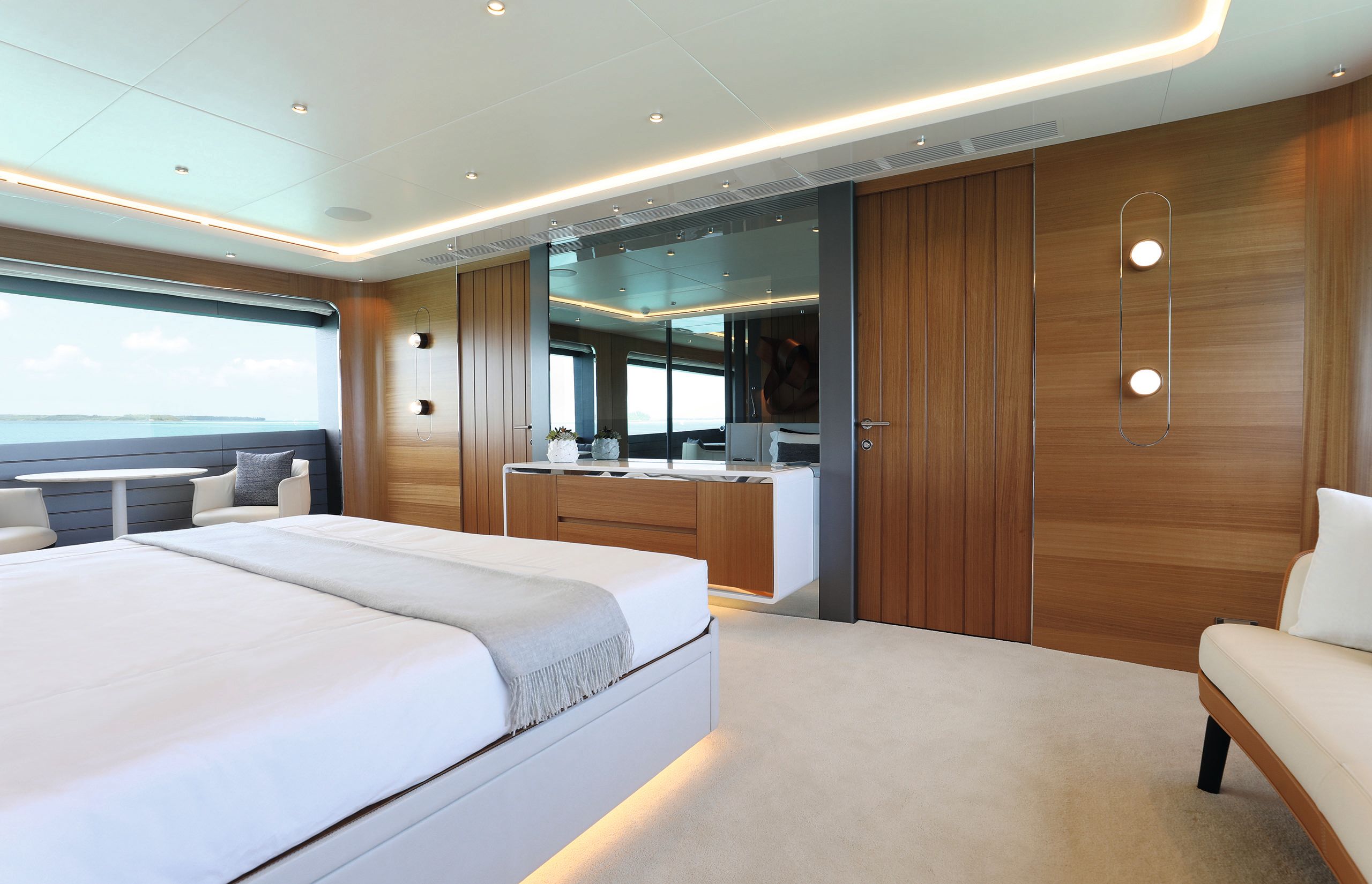
LARSON GROUP
LARSON GROUP
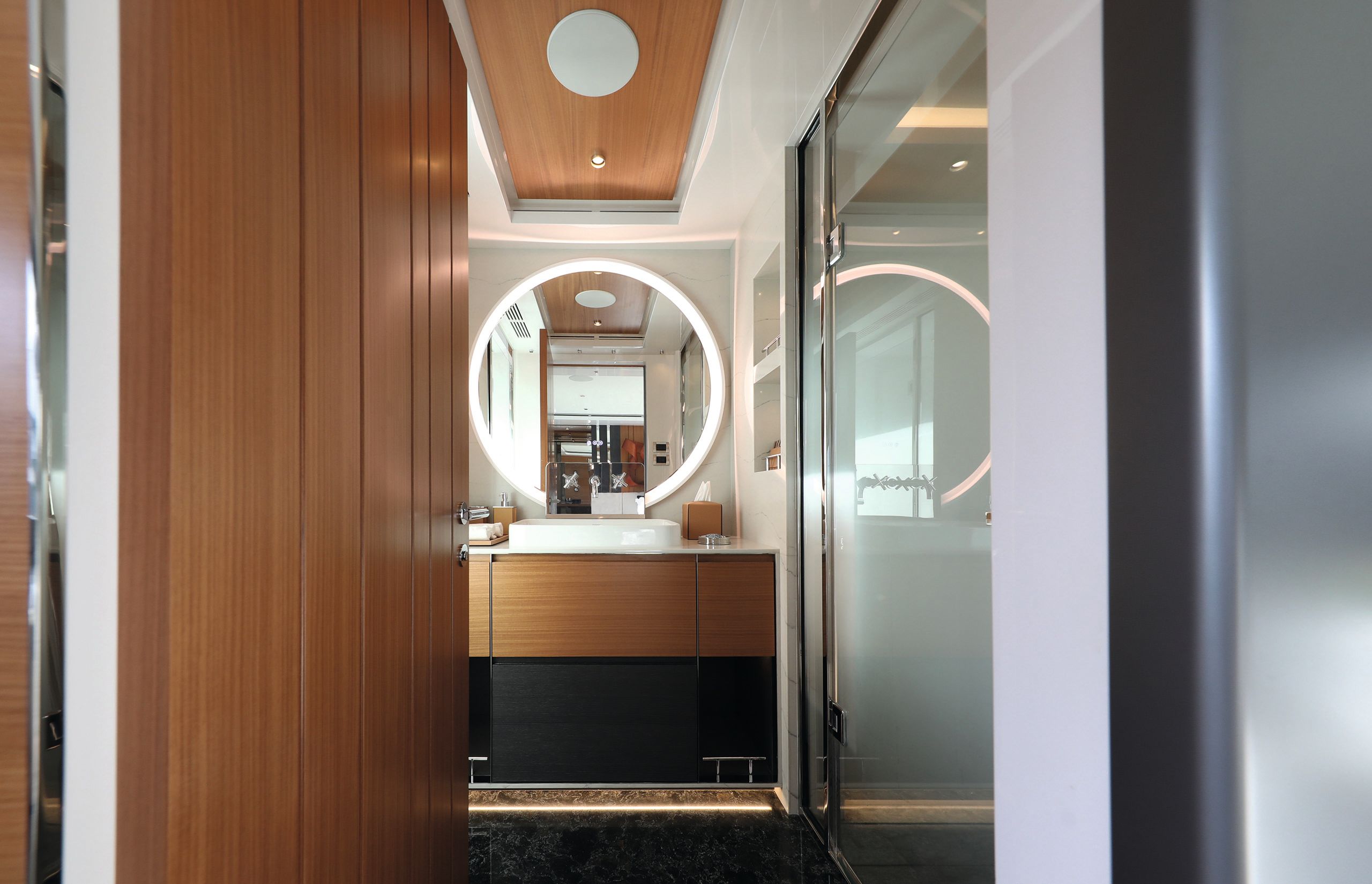
LARSON GROUP
LARSON GROUP
The attention to detail throughout the Puro 35 is second to none, with exclusive features, such as a heated floor and large rain shower in the owner’s en suite (bottom right). The owner’s cabin is spacious and bright, thanks to the yacht’s 7.4-metre beam, ceiling height and large windows. The unique sculpture over the bed is crafted from black cherry wood by American artist Jeremy Holmes (top right). Top left: the four guest cabins on the lower deck share a lobby with mini bar and fridge for refreshments. BCM provided most of the boat’s decorative light fixtures with some sconces by Tom Dixon and Vibia
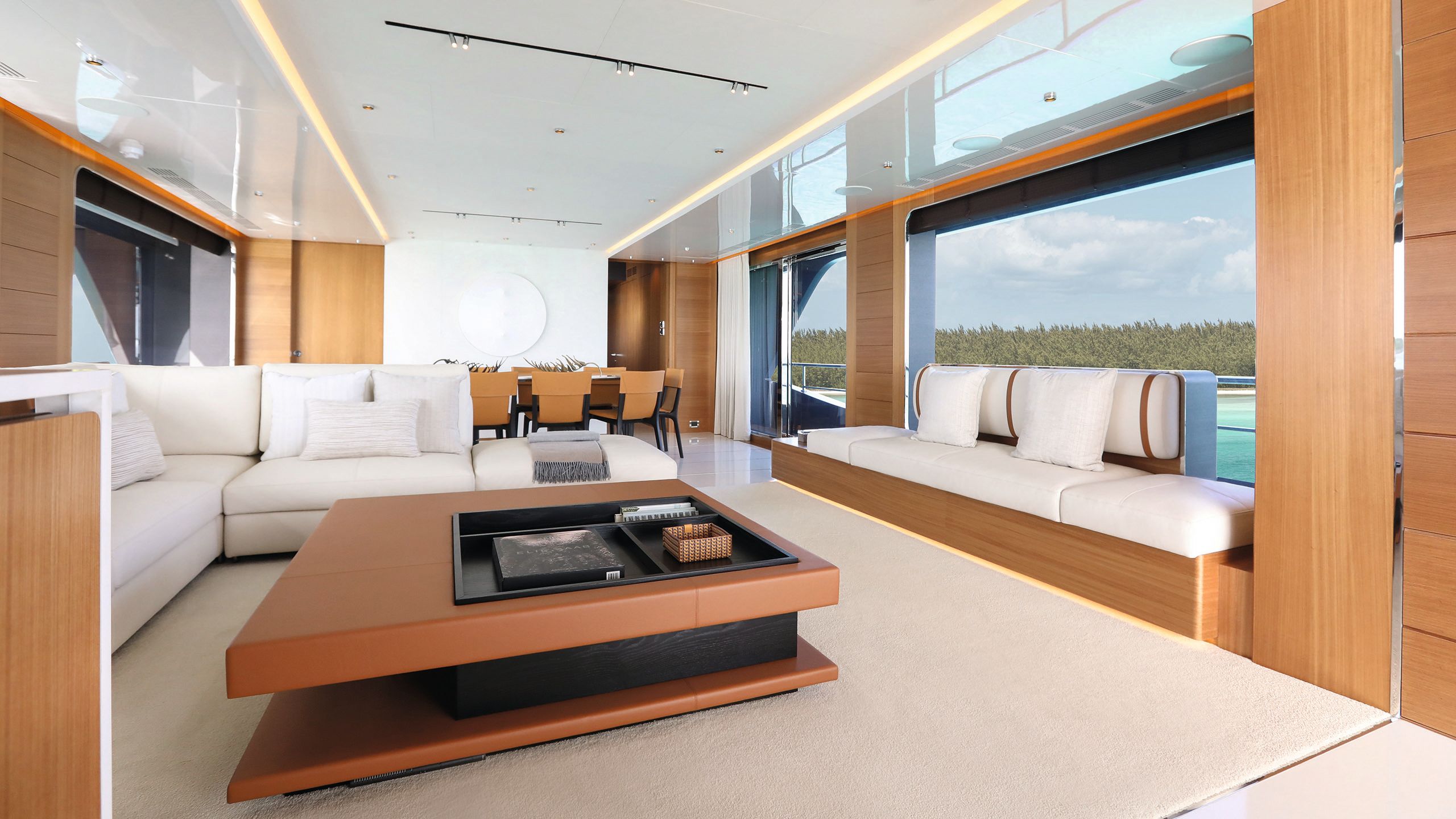
LARSON GROUP Custom furniture pieces in the main saloon include a coffee table by Poltrona Frau that is hard enough for your champagne glass but soft enough to put your feet up
LARSON GROUP Custom furniture pieces in the main saloon include a coffee table by Poltrona Frau that is hard enough for your champagne glass but soft enough to put your feet up
“Ocean Alexander has a heritage of traditional styling but has styling cues and proportions that are very elegant, and you can recognise them through the various boats in history by looking at the bow flare, which is always that of a very marine boat, a very protected boat,” Cassetta says, explaining the exterior design’s genesis.
“So we tried to absorb that and through the work of NavalHEAD and naval architect Andrea Agrusta, we crafted a hull shape that is absolutely OA in the bow flare and in the way it stands tall and powerful on the water.”
The features have great symmetry and ornaments, such as fashion plates, are kept to a minimum. “Notice the upper deck, it’s a single line from the bow tip to the end of it; it’s a very long upper deck, it shades the main deck cockpit completely. Now this design trick allows us to make the boat seem longer than it is,” Cassetta says.
“That upper deck interior is more than 11.3-metre long including the pilot house, but it looks like a deckhouse. You also have a 47.1 -square-metre sundeck in there that is integrated into the whole situation, almost like a coupe. You wouldn’t notice there is a huge sundeck up there, if not for the hard top.”
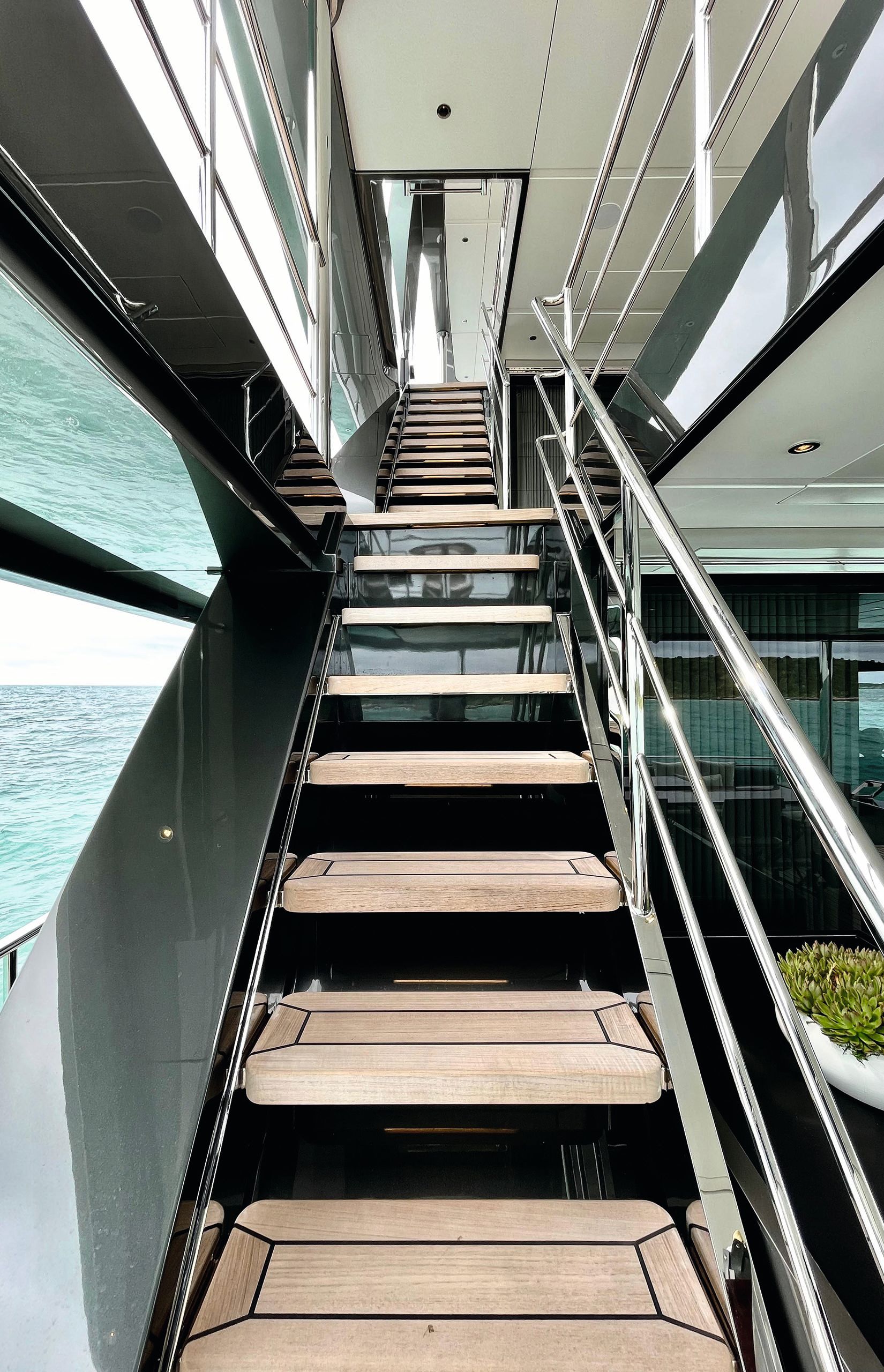
A Cassetta signature, the “stairway to heaven” effect makes for an attractive visual feature and saves space.
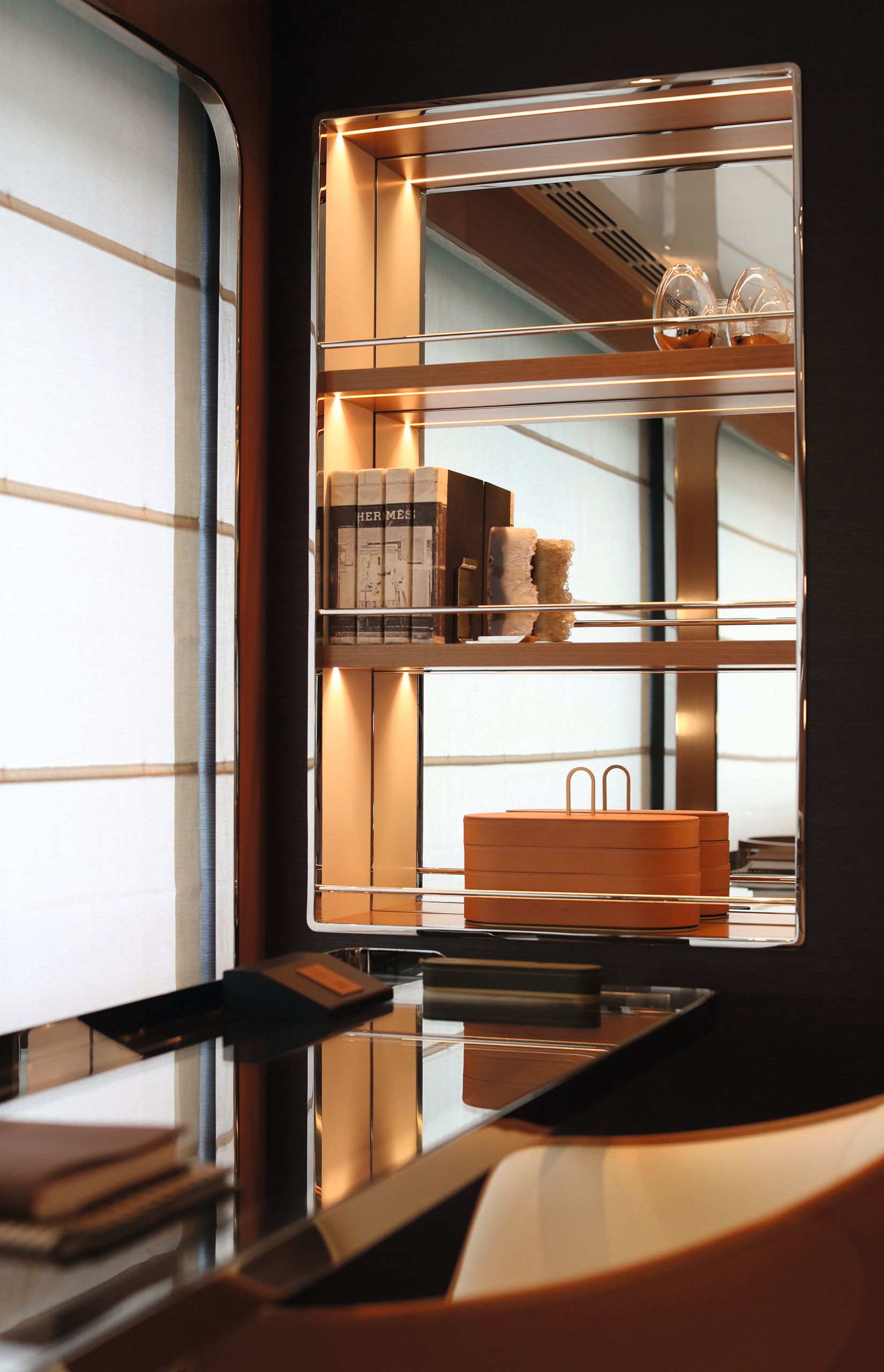
Hull No 1 comes equipped from soup to nuts with custom art and elegant furniture.
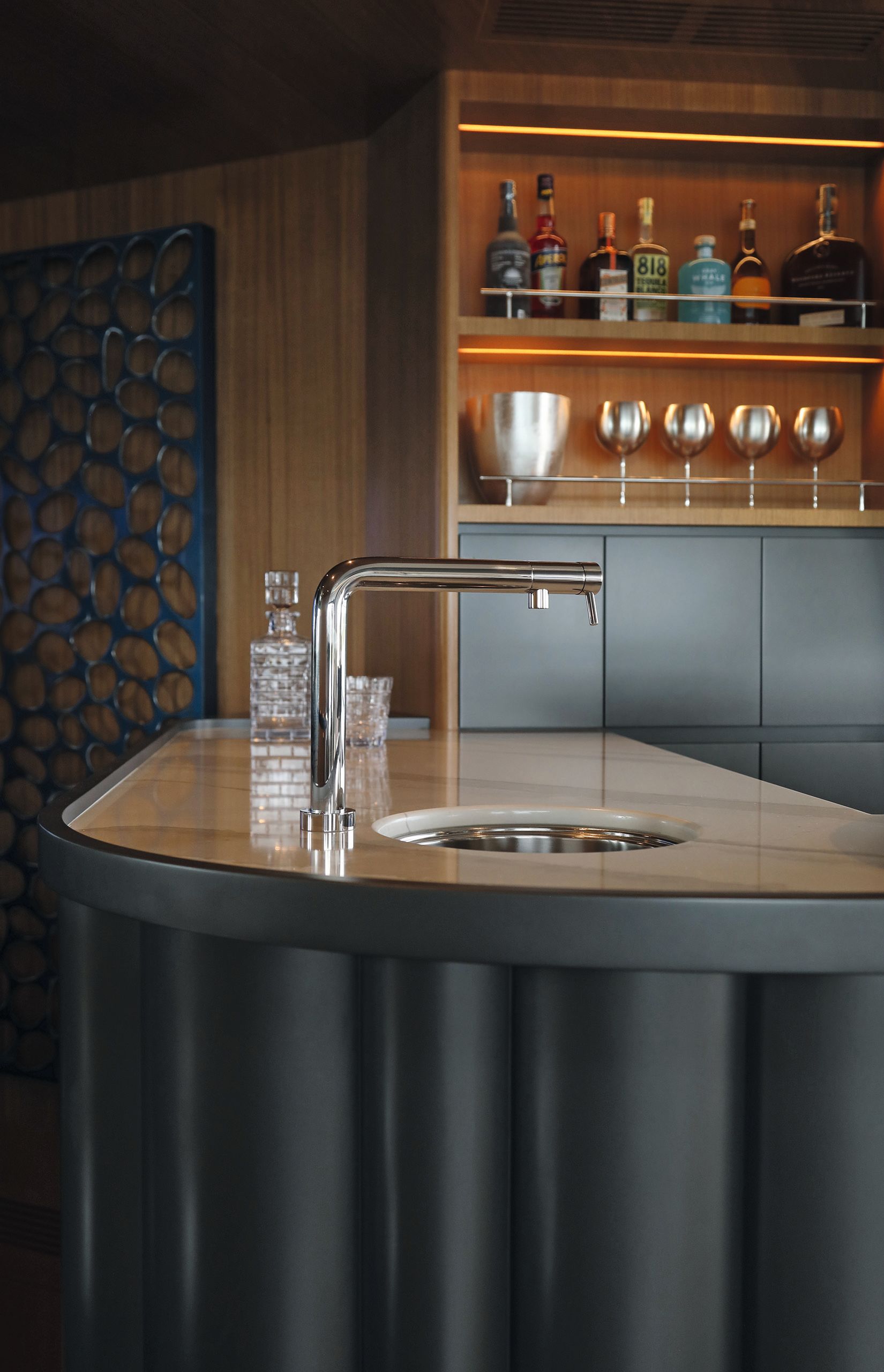
A shapely bar anchors the light-filled sky lounge with direct access to the pilothouse.
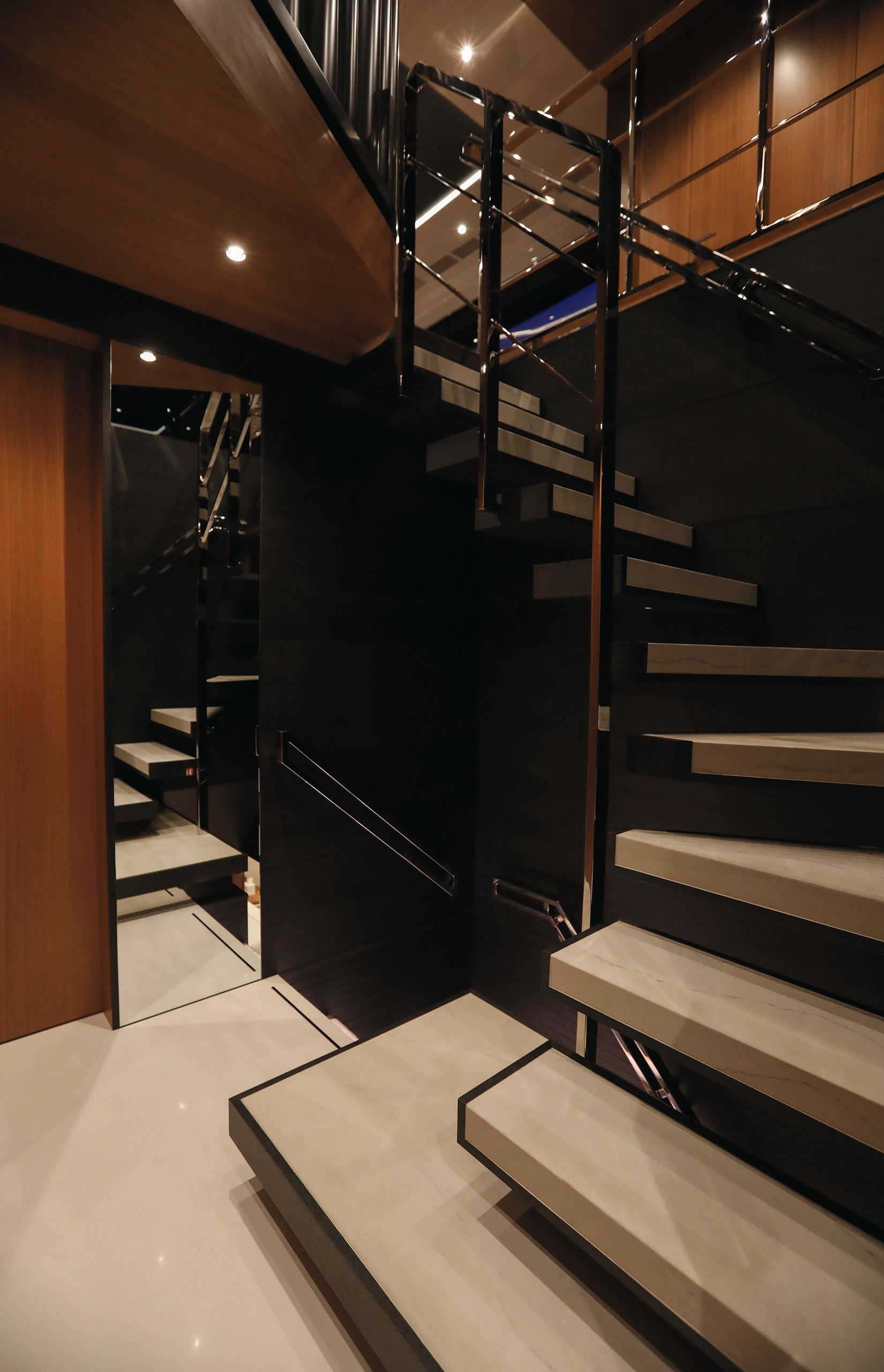
LARSON GROUP
As for the hull, Agrusta says, “The 35P features a high- efficiency semi-planing hull developed with medium V-shaped sections, which is typical of hulls made by NavalHEAD. The advantages of this type of hull are reduction of spray at the bow, improvement of running angle and increased course keeping, and in general very high seakeeping performances.
“The deadrise is continuously variable both in vertical sections and, of course, on the hull length. This ensures a perfect mix between seakeeping and lift at any speed, helping to have a correct and almost constant dynamic longitudinal trim angle during navigation, avoiding too much high angle in semi-displacement speed.”
The draft, ranging from 2 metres to 2.3 metres at full load, is desirable for places like the Bahamas where depth can be an issue, and CFD analysis refined the design of the prop tunnels and other key areas.
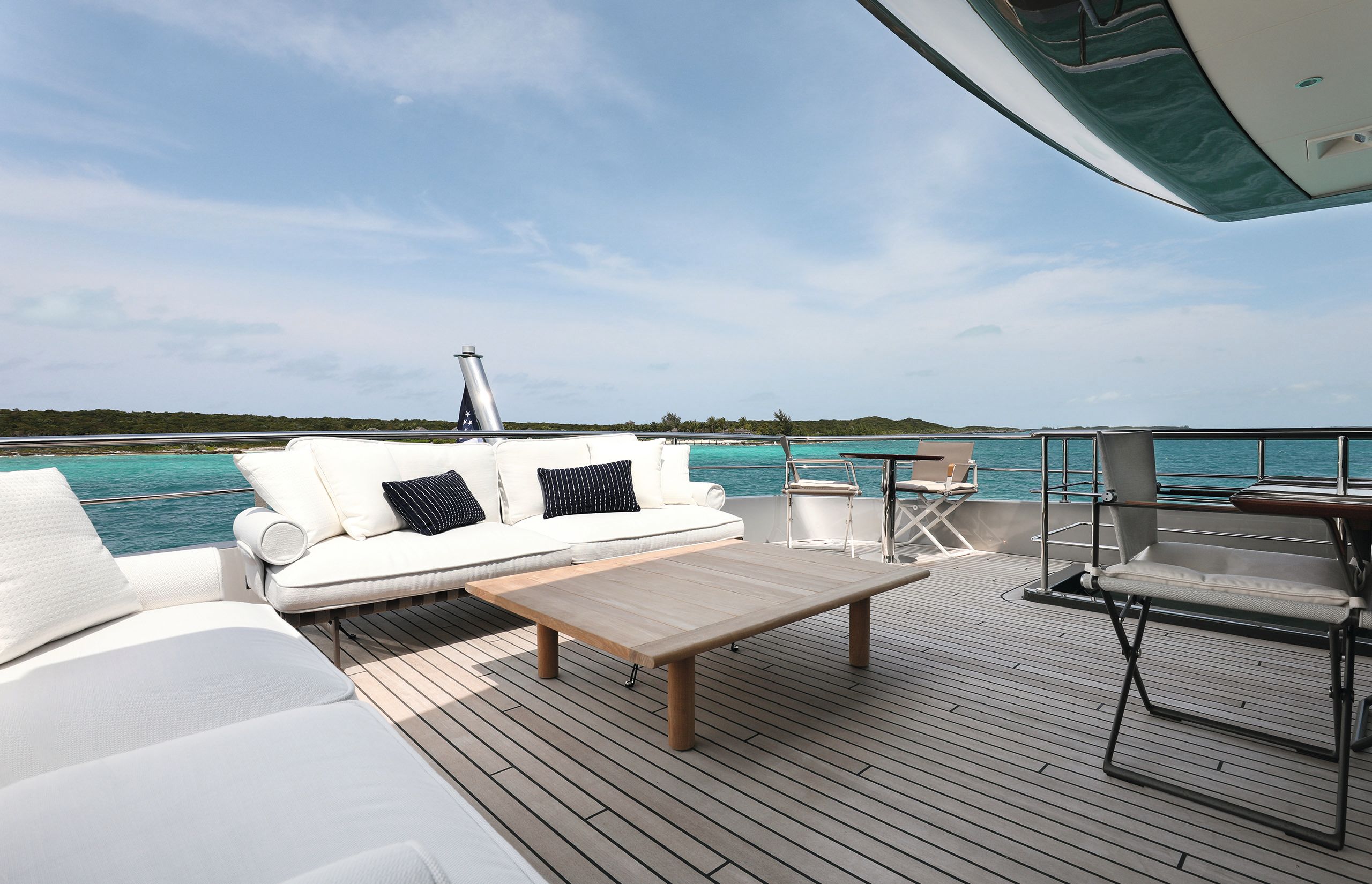
So how did all that work out? Despite the rough seas, the yacht, equipped with hydraulic Vector Fin stabilizers, did not roll uncomfortably and an invisible force mitigated what should have been a noticeable pitch in these conditions.
At regular intervals, the wind lobbed sheets of water over the windshield — a beautiful 4-metre wide single piece of curved glass by Viraver — seasoning the grey paint and brightwork with salt as they receded.
Seated in one of three large chairs in front of large multifunction displays tracking the boat’s progress along the preset course, I took it in strides as did the boat, cruising between 11.5 to just over 13 knots in the worst of it.
Eventually, I left the bridge and settled in a Dedon folding chair outside, my gaze alternating from the embroidered stars on the flag flying in the strong breeze and the watery trail stretching to the horizon.
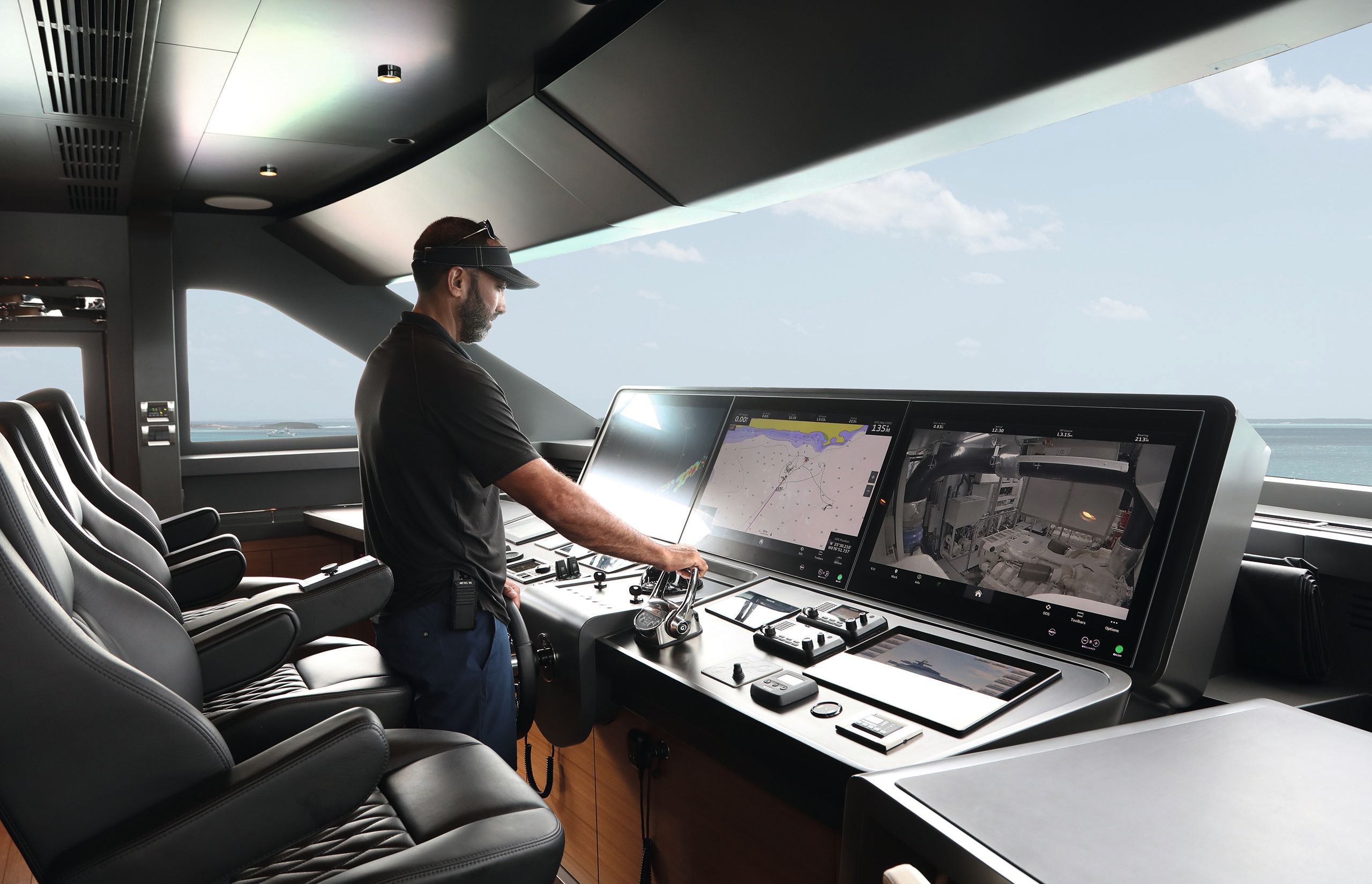
LARSON GROUP
LARSON GROUP
“Italian builders were missing that understanding of how US buyers use and enjoy their yachts. Pure. Timeless. Yachting. This was the core focus”
The wheelhouse offers excellent visibility through the mullion-free windshield
Sea conditions and vistas improved as we neared the Bahama Banks and again as we approached the Berry Island chain. Reaching the next waypoint, we picked up speed, riding the waves at 17 knots with the twin MAN V12s at 75 percent load.
The boat flirted with higher peaks on occasions; official sea trials for this specific hull place the top speed at 18 knots, but we exceeded it once or twice. This is hull No 1, a prototype really; she came in a bit heavier than future hulls and her top speed is a bit less.
CONVERTIBLE SPACES
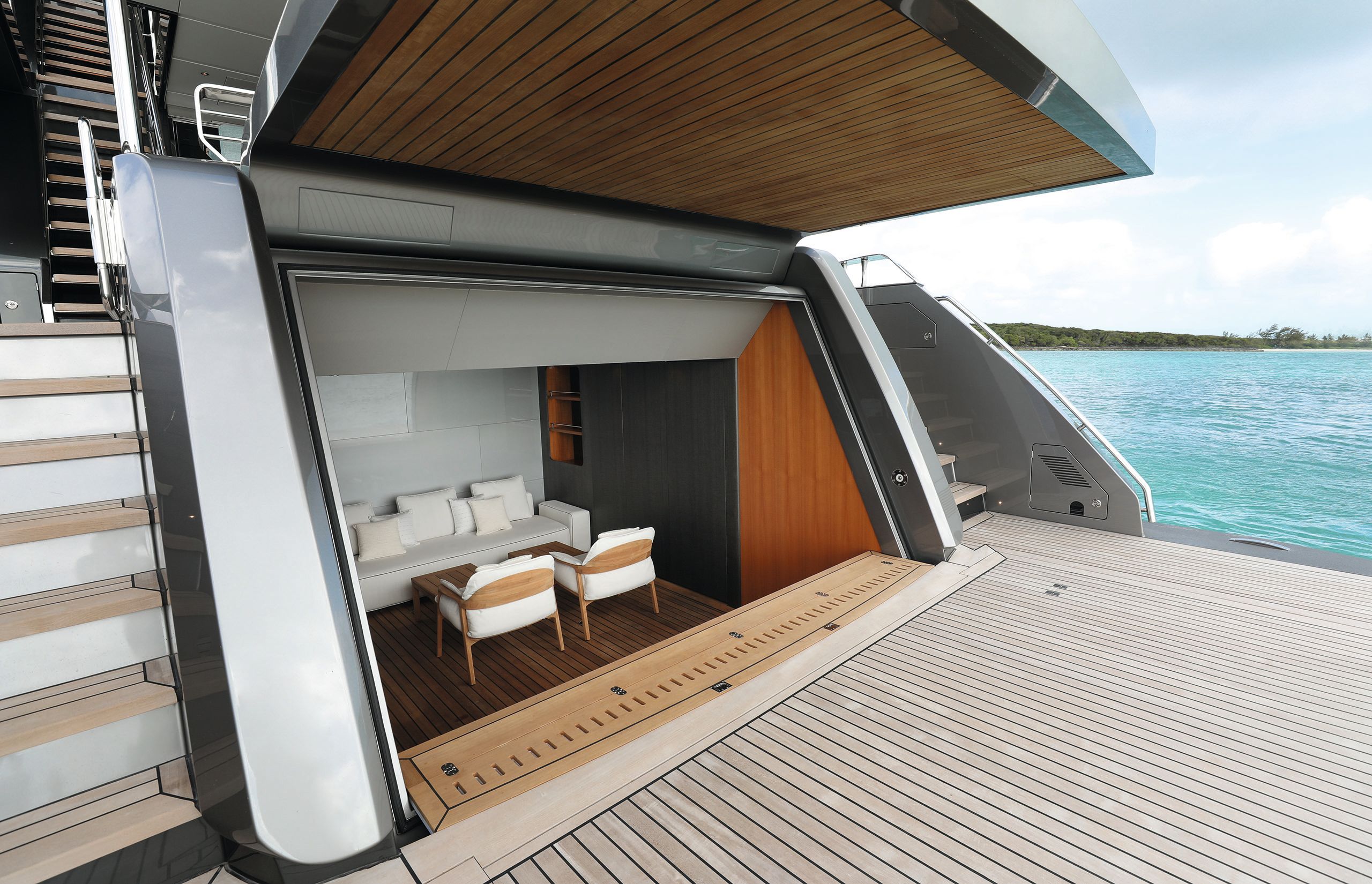
The nearly 4-metre wide Z-lift platform lift extends and lowers out into the water. It has a capacity of 2,300 pounds and it can support a good RIB tender. Where hull No 1 has a beach club, the space can be built as a garage with side opening door to launch the tender, an option adopted for hull No 3.
The foredeck has a large sunpad that can be moved manually along tracks to various positions; it slides all the way
to cover the glass-sided Jacuzzi, which overlooks the lower anchoring area. With space for a table and anchoring points for poles to support a bimini, it transforms into a dining spot.
The water turned turquoise and shallower, and we slowed down. I walked up and down to take photos of the sea and sky reflected in or visible through the glass surfaces. The sunlight made sparkles on the railing.
When designing the yacht, the Cassetta team took advantage of one of the Taiwanese yard’s strengths, its superb stainless-steel work. The brightwork is spectacular outside and inside. During an earlier visit, Sally Doleski, the brand’s VP of marketing, advised me to look up, as we reached the lower deck. “It’s like something you’d see in Architectural Digest,” she says of the view of the stairs from below.
All and all, it is obvious the team sweated the details, and it makes for a pleasant experience on board. “Whenever I walk on, I get this sense of peacefulness and I could not explain why,” she adds. “Giovanni pointed out to me all the symmetry that exists — for instance, the brightwork lining up with the cabinetry.
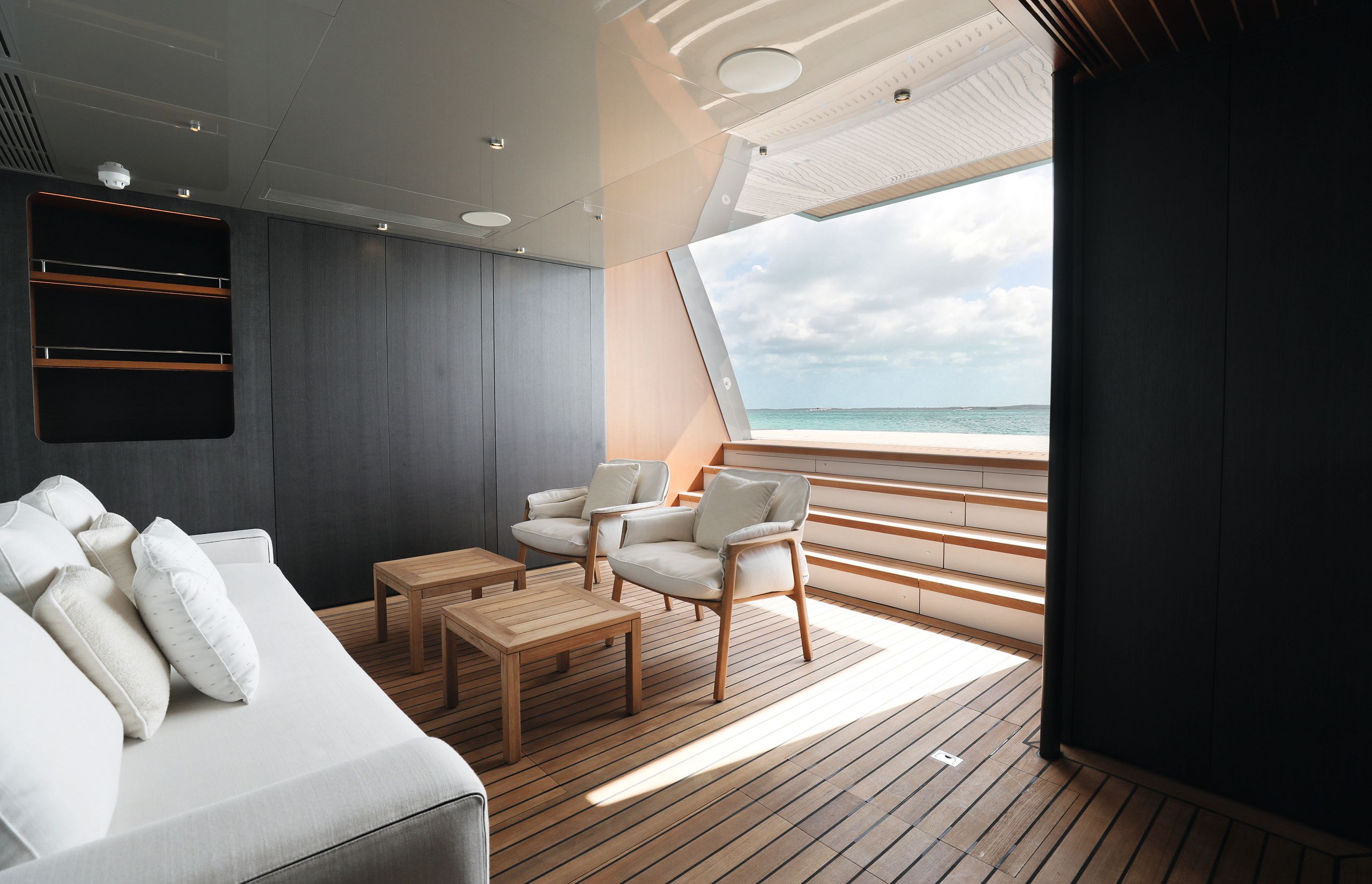
LARSON GROUP The transom door has been designed so it is almost invisible when closed
LARSON GROUP The transom door has been designed so it is almost invisible when closed
We have such a human response to balance, so it creates that [feeling].” I can only agree.
Shapely window frames, leather blinds — so there is no clatter when closing or opening them — the contrast of lacquered and matte surfaces, low-lying furniture, accents of stainless, matte leathers and Cambria in various finishes, contribute to an elegant interior that Cassetta describes as “transitional.”
The decor of hull No 1 uses Tay veneer by Tabu in different directions, leather and light fabrics, a lot of it, a washable, exterior-grade fabric from Mariaflora. Customised pieces of furniture include a saloon coffee table by Poltrona Frau.
“We have done something like this in a large size on a custom 60-meter Benetti. It’s hard enough for your champagne glass but soft enough to put your feet up,” Cassetta says, demonstrating the point by placing his legs on the square table.
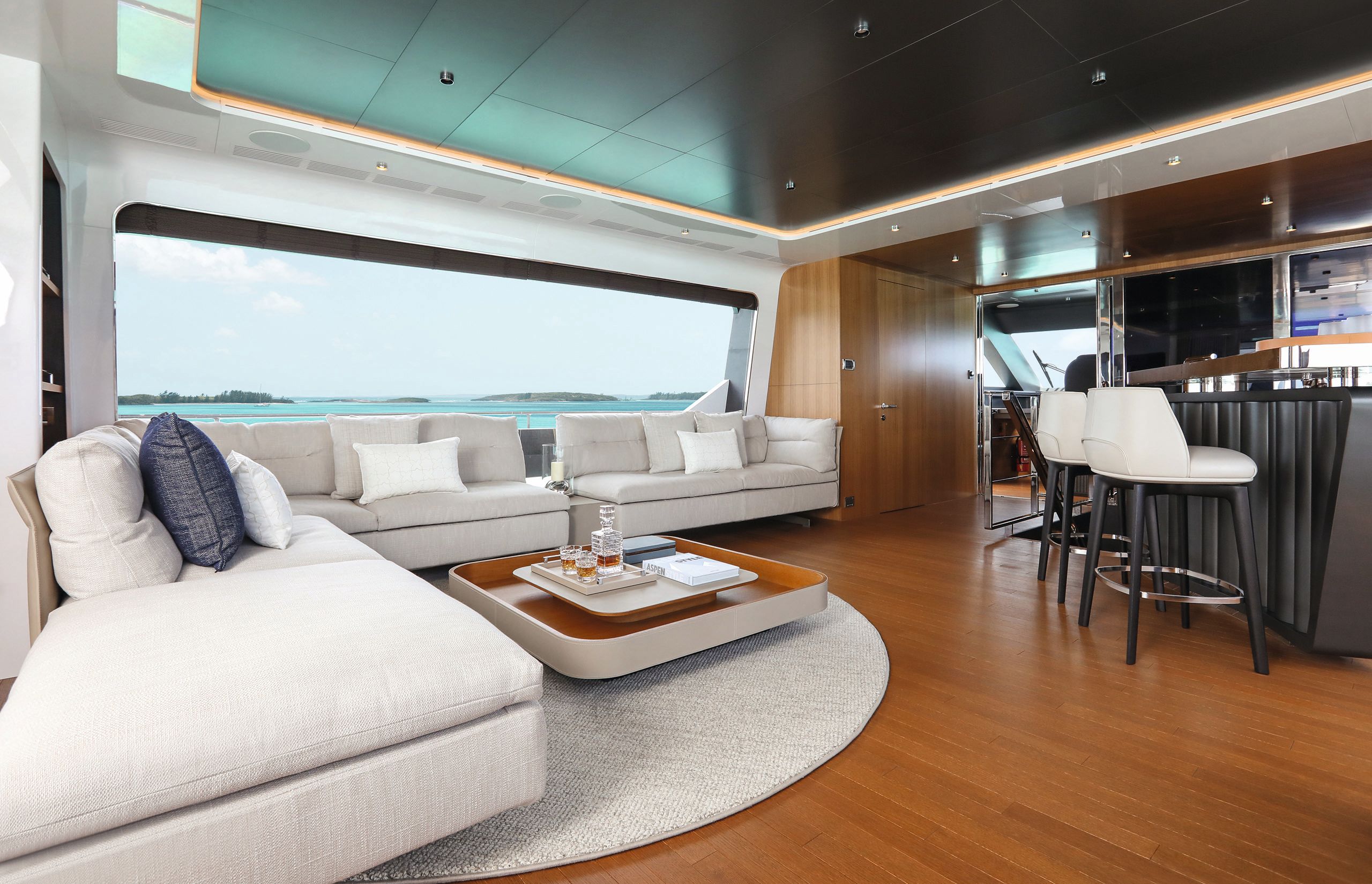
LARSON GROUP
LARSON GROUP
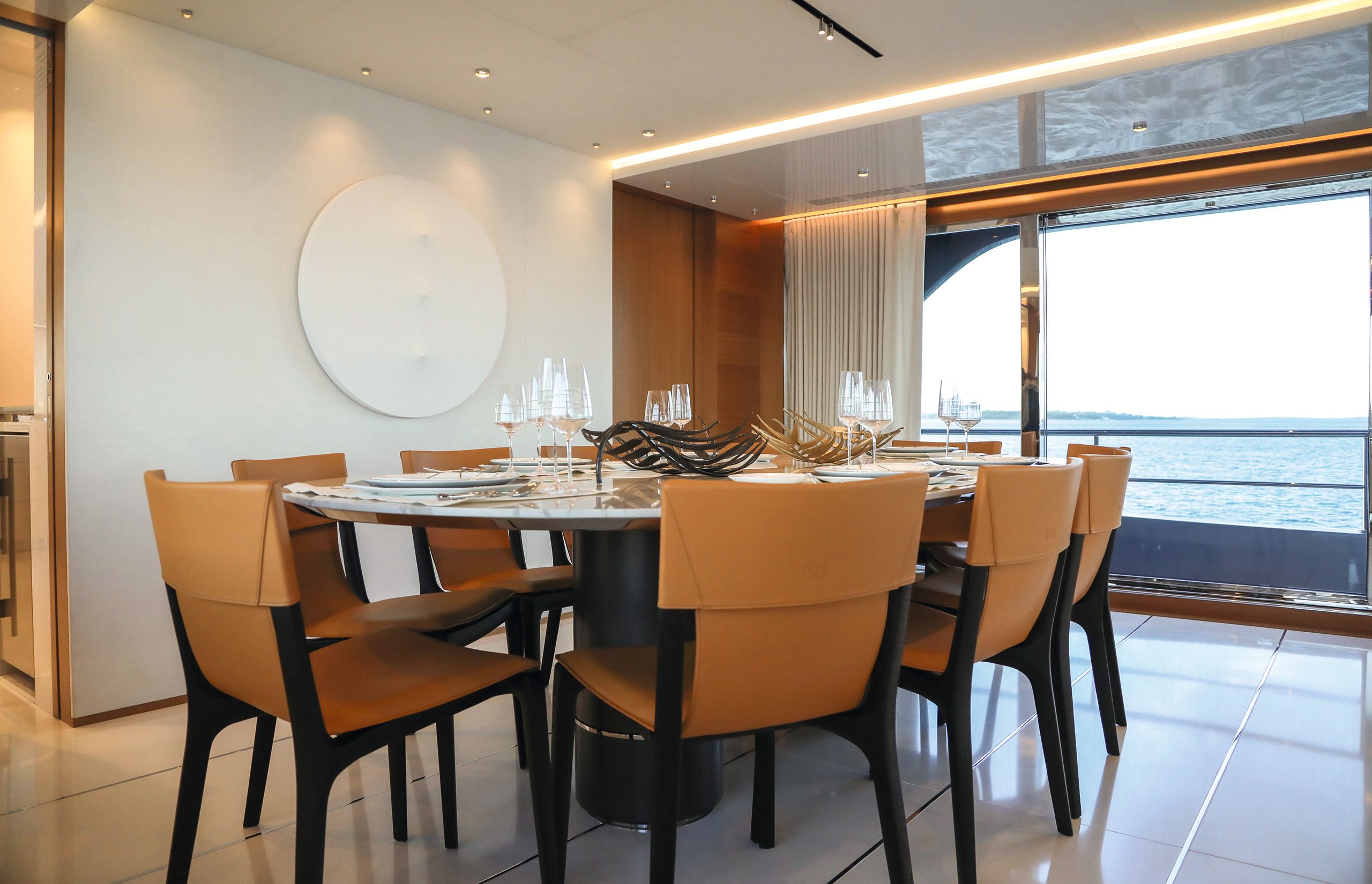
LARSON GROUP
LARSON GROUP
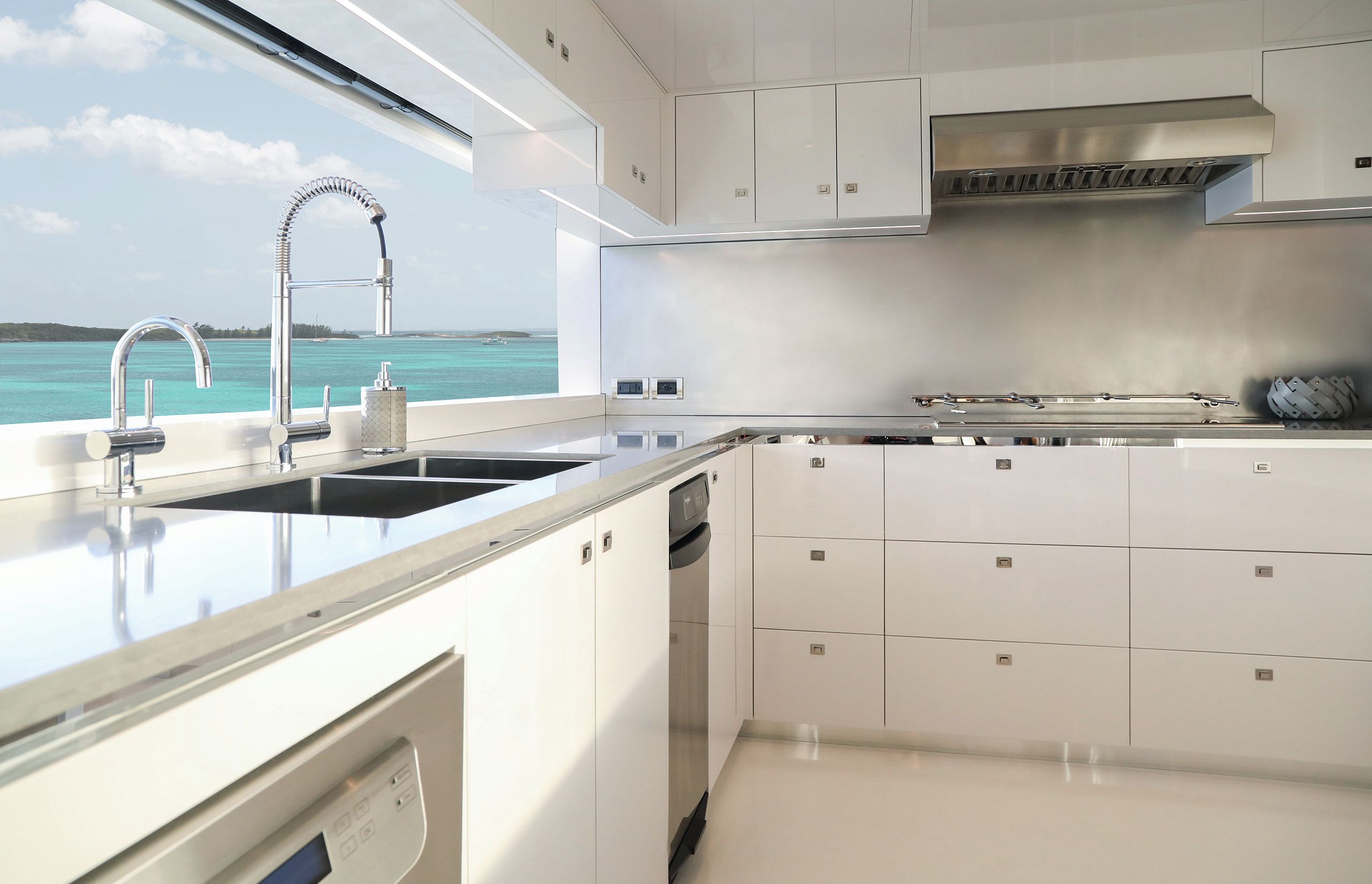
LARSON GROUP
LARSON GROUP
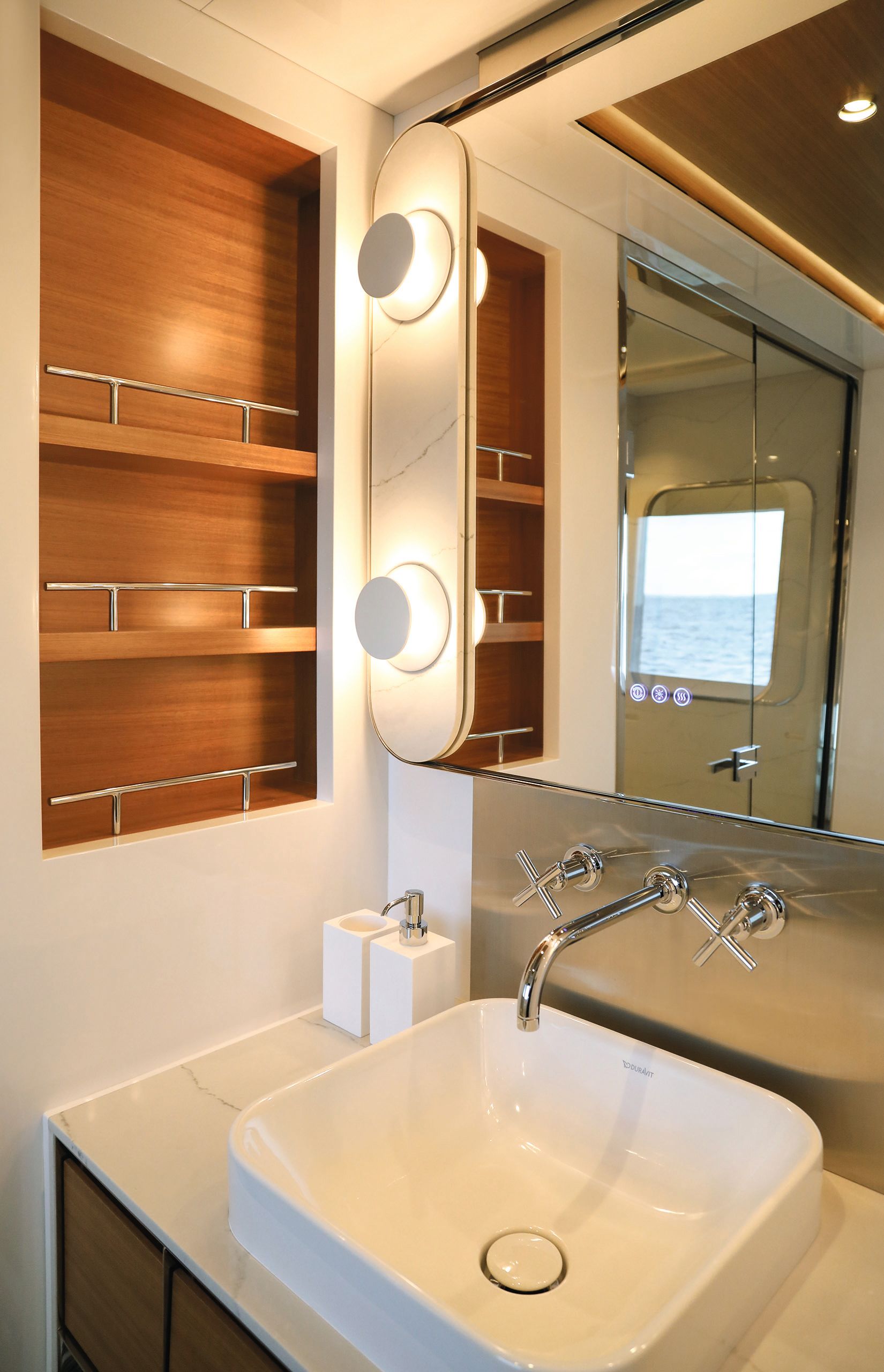
LARSON GROUP
LARSON GROUP
Top right: The chairs surrounding the dining table are also by the Italian brand Poltrona Frau. Bottom left: the galley is behind a pocket door on the main deck and is a handsome space with top-of-the-range appliances from Wolf, Sub-Zero and Miele
Similarly appointed, the sky lounge is a fantastic space, filled with light. A stainless-steel frame sliding-glass door separates the lounge itself from the bridge and its large multifunction displays. A filter darkens the glass for privacy or night-time navigation, but other than these cases, the views are endless.
Representatives of the shipyard were at the show, listening attentively for feedback. Their interior skills are clearly on display, for instance in the owner’s cabin where the shipyard built a stainless steel and glass desk that appears to be floating, an eye-catching piece in the elegant and bright space.
The cabin feels spacious thanks to the yacht’s 7.4-metre beam, ceiling height and large windows. The bathroom boasts textured Cambria, a heated floor and an extra-large rain shower. The four guest cabins on the lower deck share a lobby mini bar and fridge for refreshments, and they are elegant and super-quiet. It’s easy to adjust curtains, blinds, lights and A/C for comfort, even on your first time on board.
“Heard again and again was ‘incredible design’ and ‘unsurpassed execution,’ which is always great to hear, but more humbling when it comes from your competition”
Another feature, the galley, behind a pocket door on the main deck, is a handsome and well-appointed space with top-of-the-line appliances from Wolf, Sub-Zero and Miele. It comes with plenty of storage, a huge refrigerator, a freezer and a full wine cooler, and you can enjoy the view while rinsing dishes in the sink before running them through an ultra-efficient five- minute wash cycle in the Miele.
The beach club, fully finished and furnished, can be used as a garage for a Williams 520 SportJet, in which case the yacht will be equipped with a side door. This will be the case for hull No 3. The transom door itself is worth mentioning. Cassetta designed it so it is virtually invisible when closed.
Last but not least is the sundeck with its attractive bar. The custom bar stools with exterior leather by Poltrona Frau and polished stainless-steel bases alone are worth the price of admission. Hull one, under contract at the time of writing, comes fully equipped, including linens from Oliveri, custom art pieces and two sets of fine tableware.
“The response at the Palm Beach boat show was incredible, not only from the public but also our current owner network and the industry in our peer group. Heard again and again was ‘incredible design’ and ‘unsurpassed execution,’ which is always great to hear, but more humbling when it comes from your competition,” Mundy says.
By the time you read these words, you may have to wait for the next one, but the good news is that hull No 2 will be shown at the Fort Lauderdale boat show.
Another restful night followed the crossing to Chub Cay. As the rising sun replaced the full moon, I watched the Puro leave the dock, ablaze with light but quiet. Missing under the logo was a name on the transom door. What will it be?
I vote for Pure Joy.
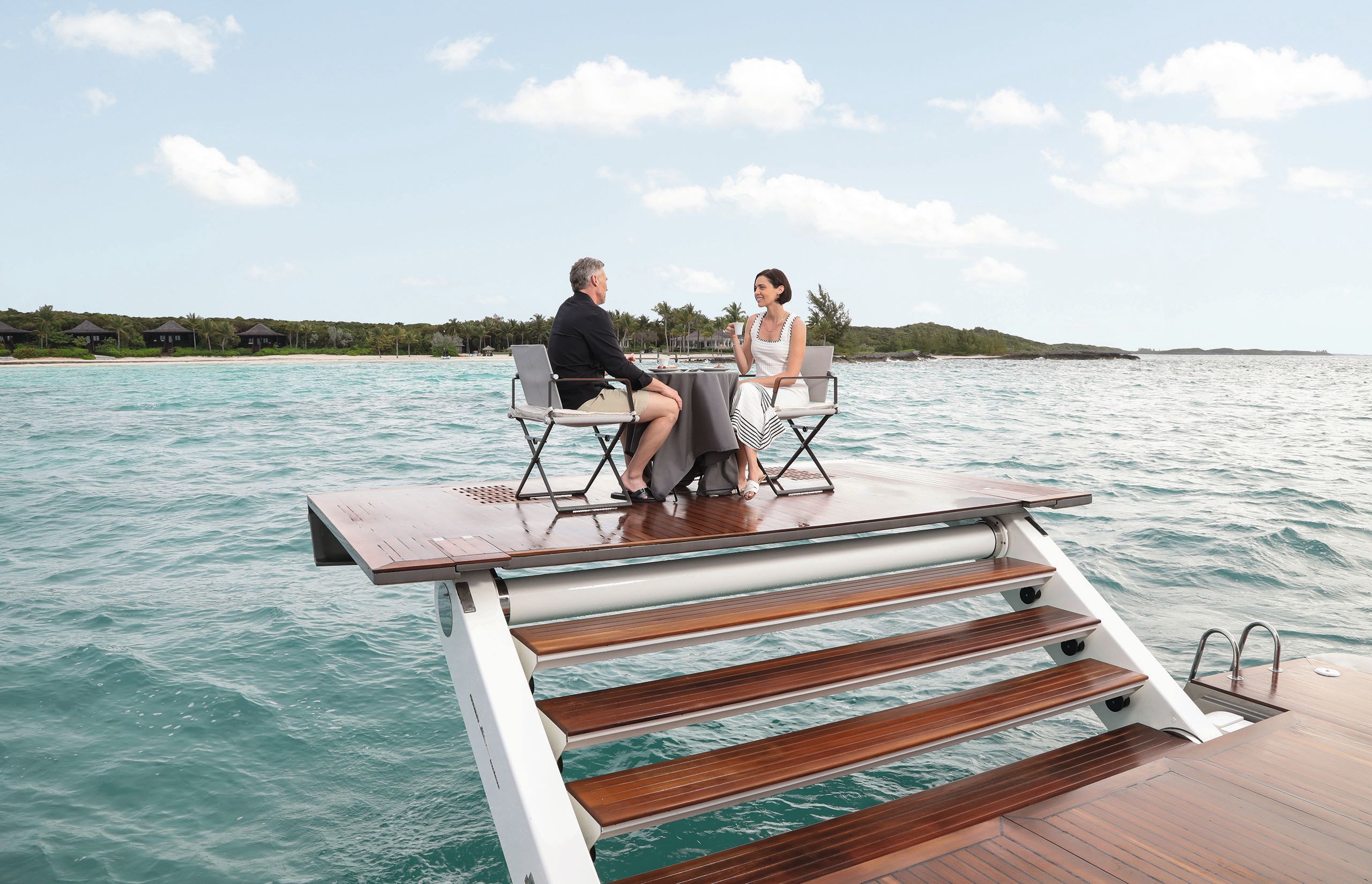
First published in the July 2024 issue of BOAT International US Edition. Get this magazine sent straight to your door, or subscribe and never miss an issue.
ITALIAN TOUCHES
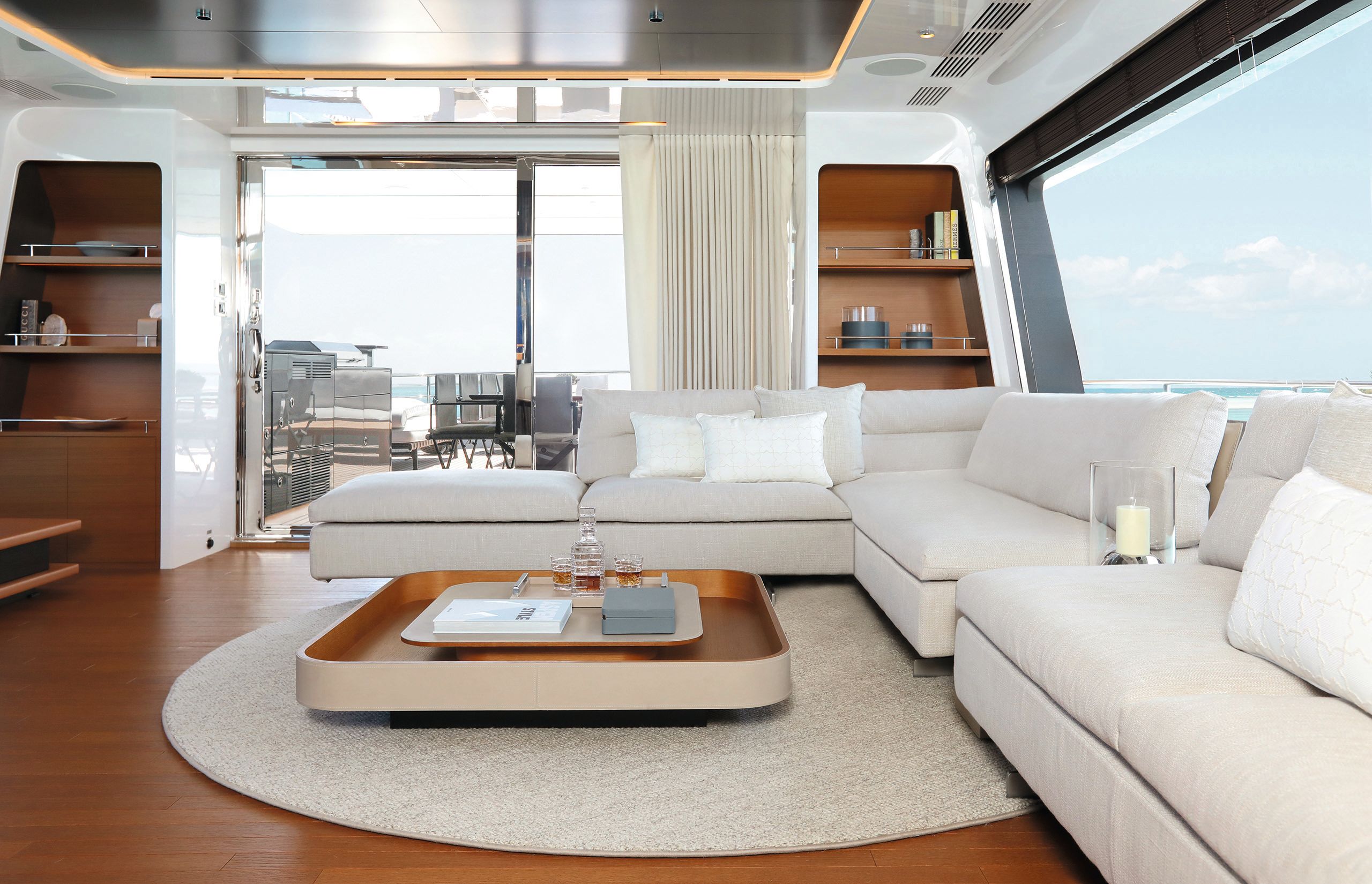
The Italian designers tapped some of their go-to brands from their home country. The linens are by Oliveri of Tuscany. Poltrona Frau is well represented in custom pieces, including tables, bar stools and elegant dining chairs.
The glass is by Italian glassmaker Viraver. But it goes far beyond the pretty stuff. The naval architecture is by NavalHEAD, a company based in Trieste.
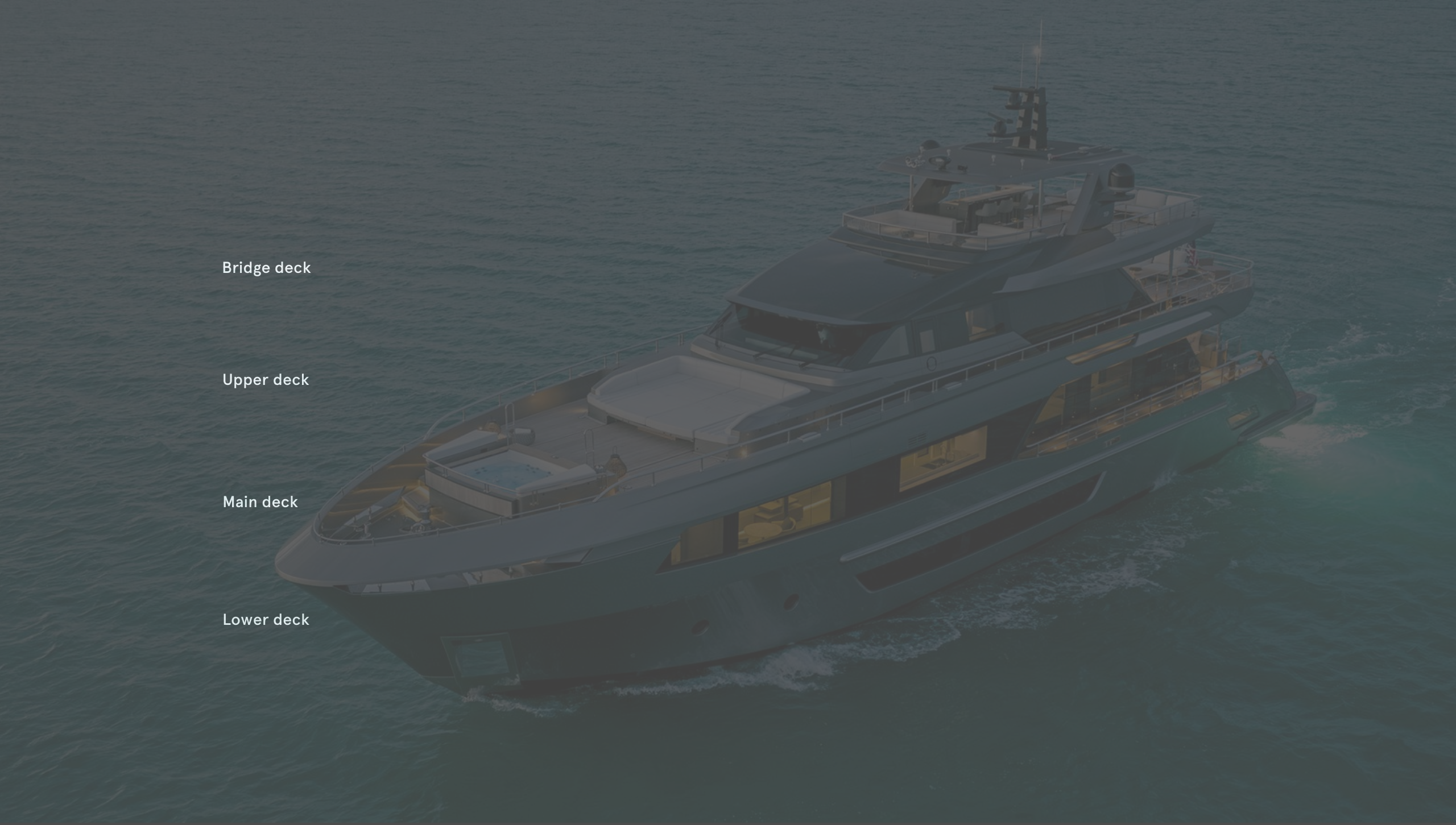
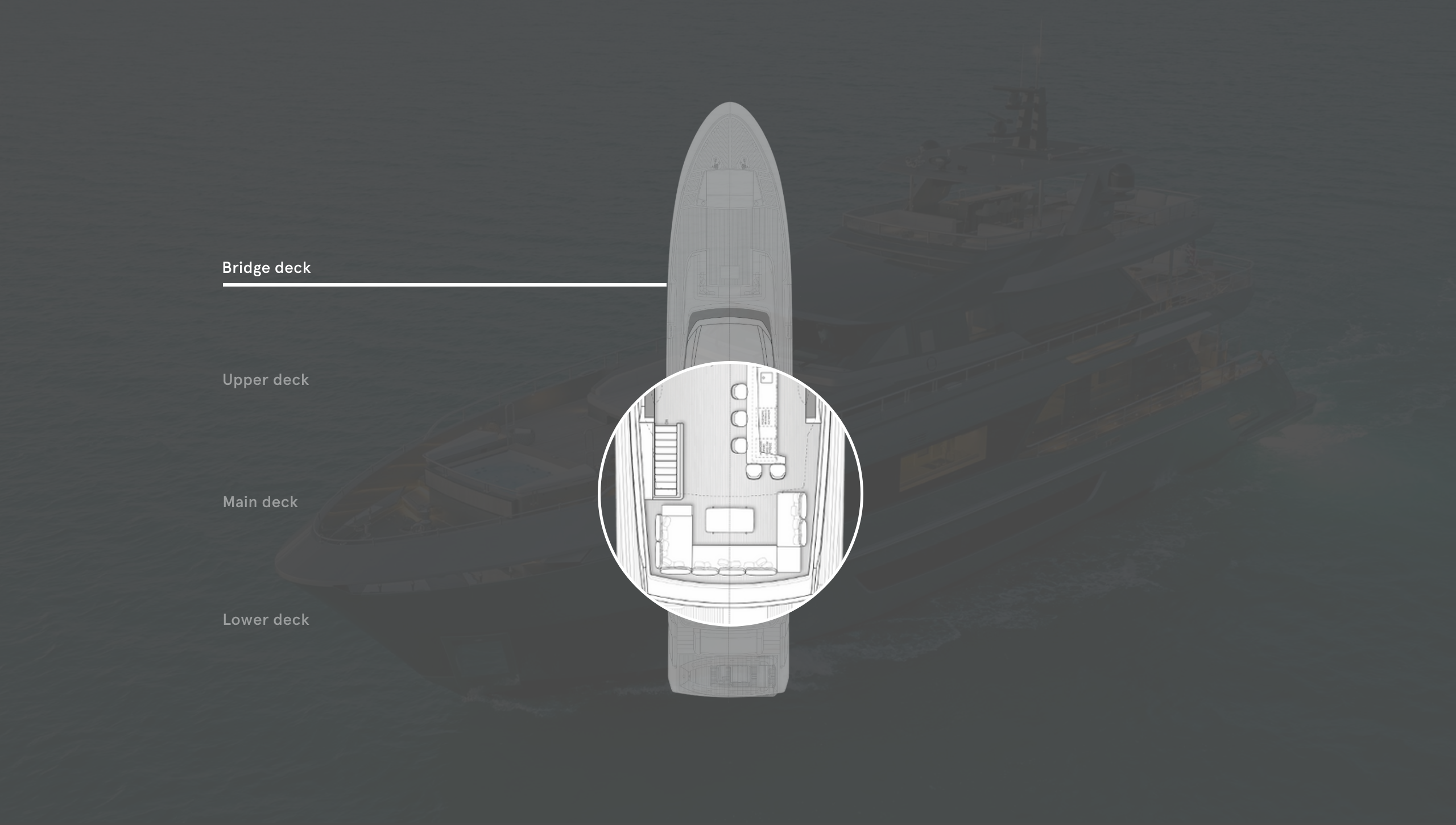
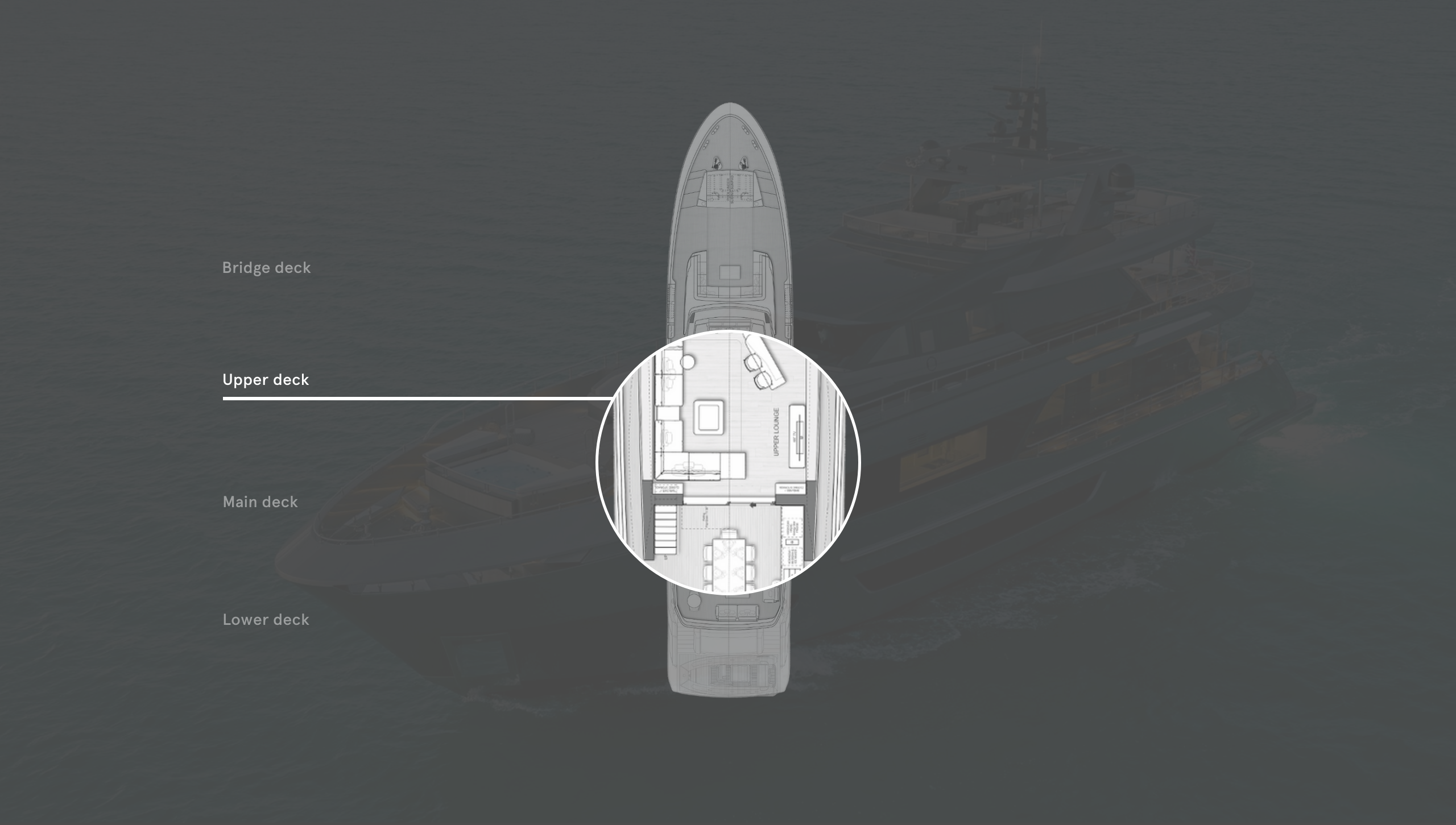
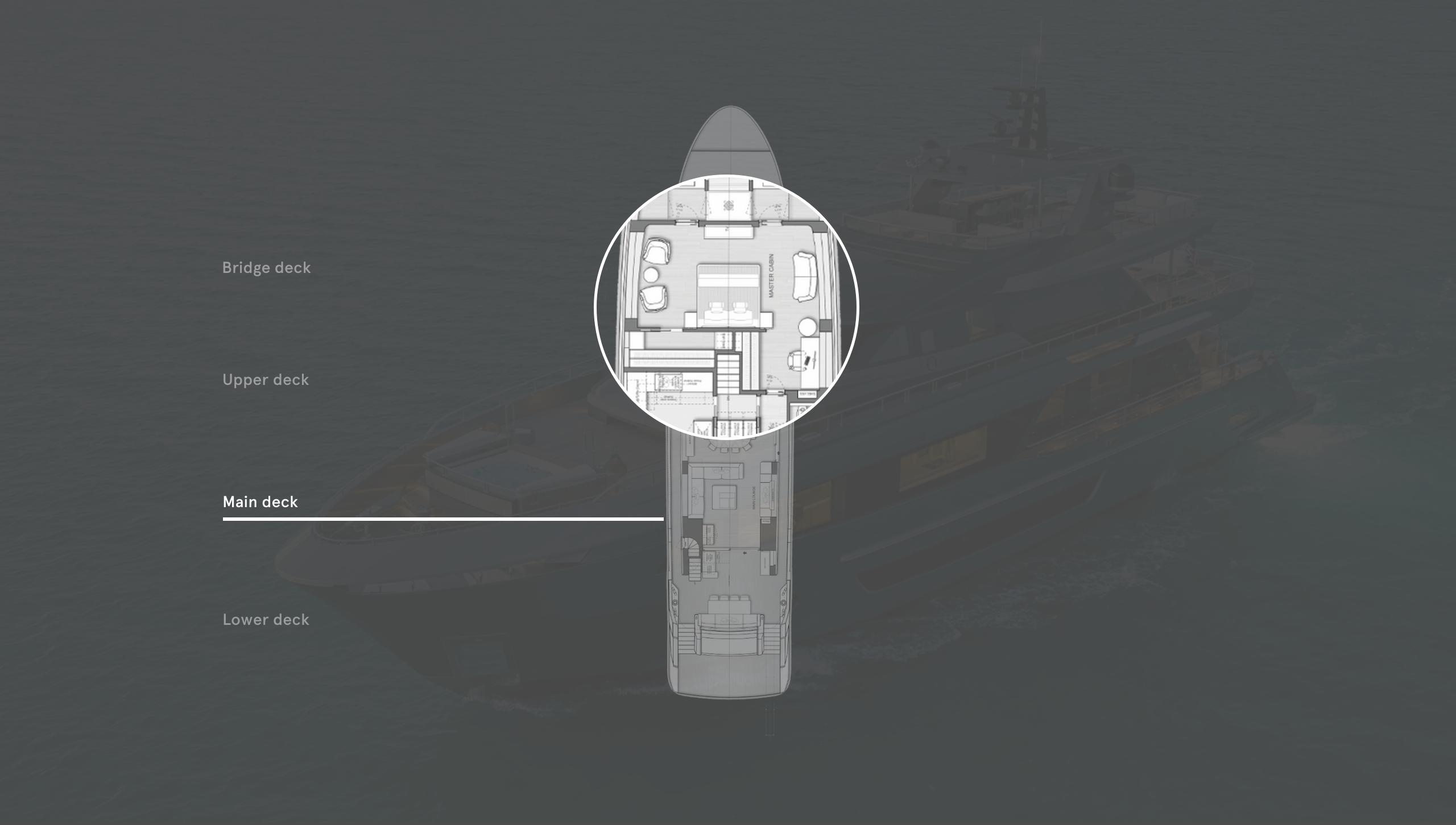
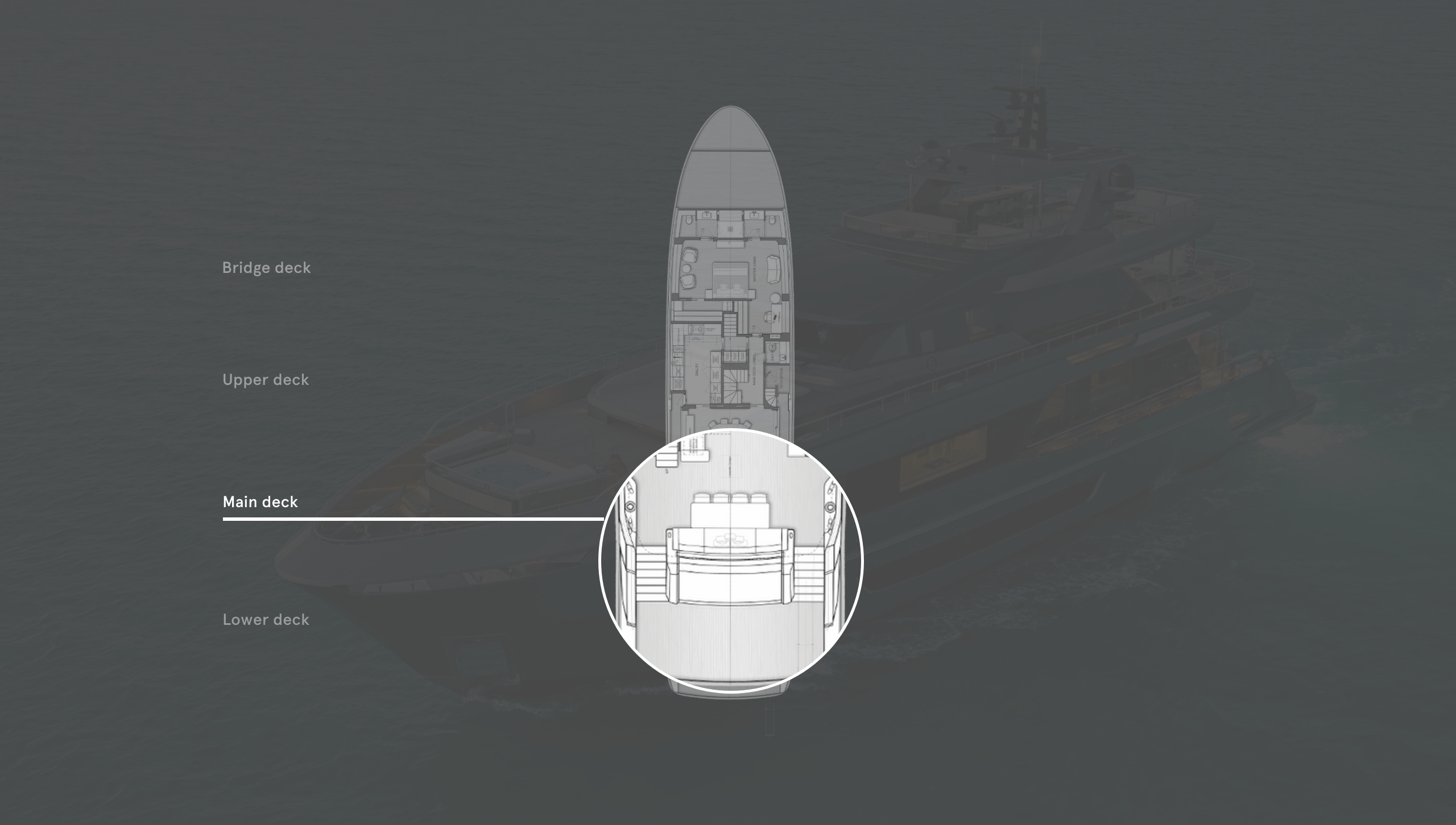
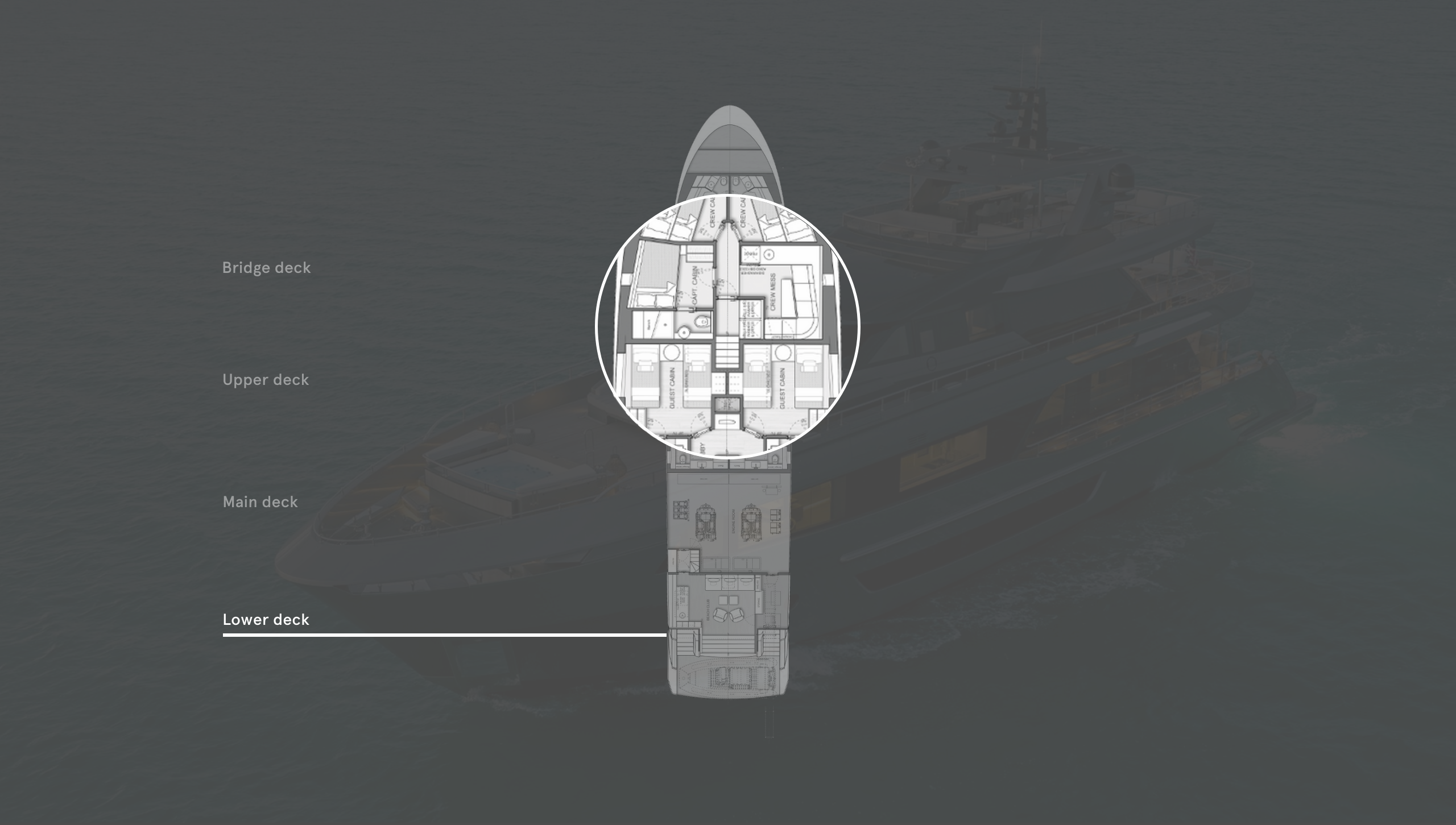
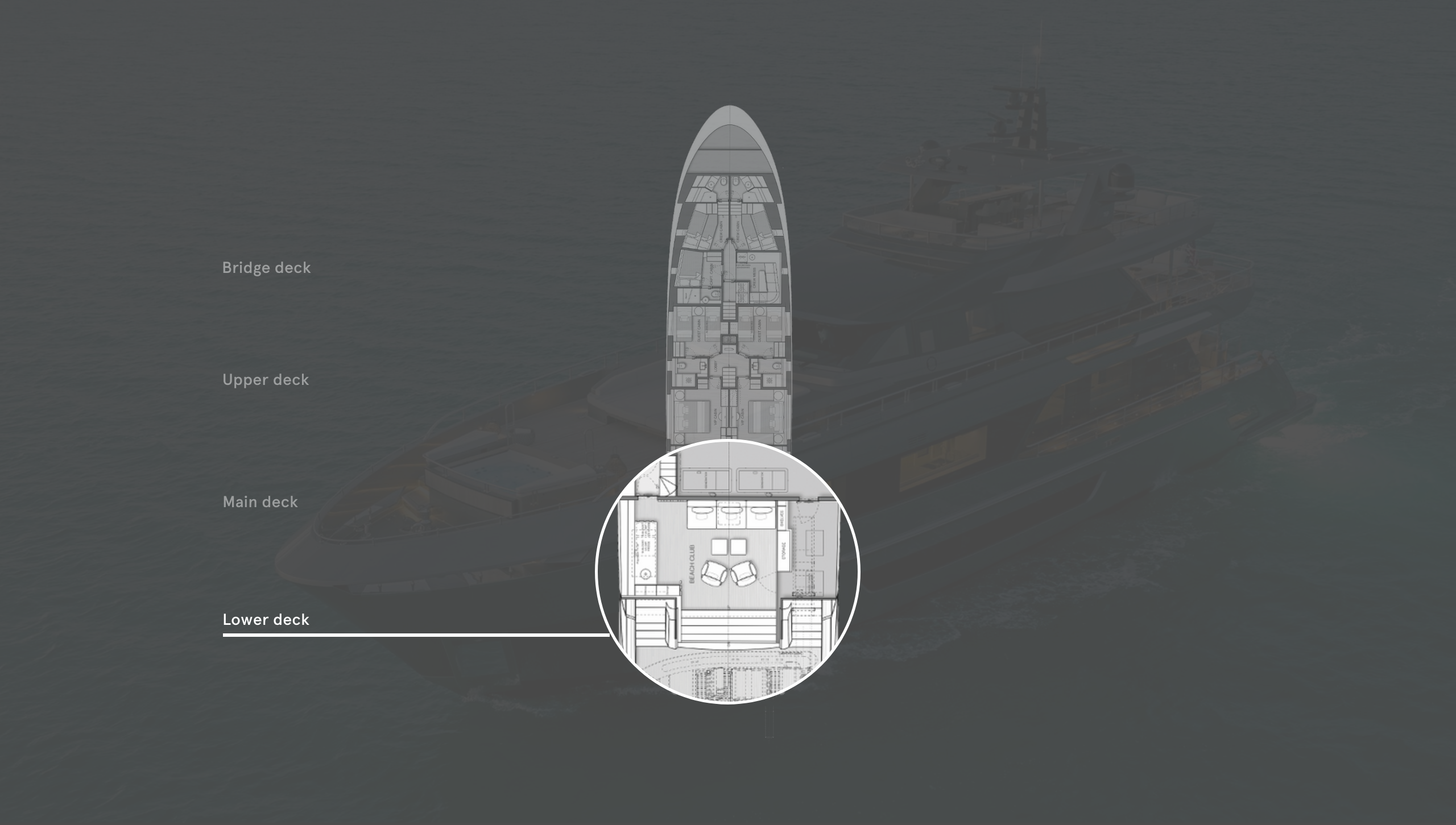
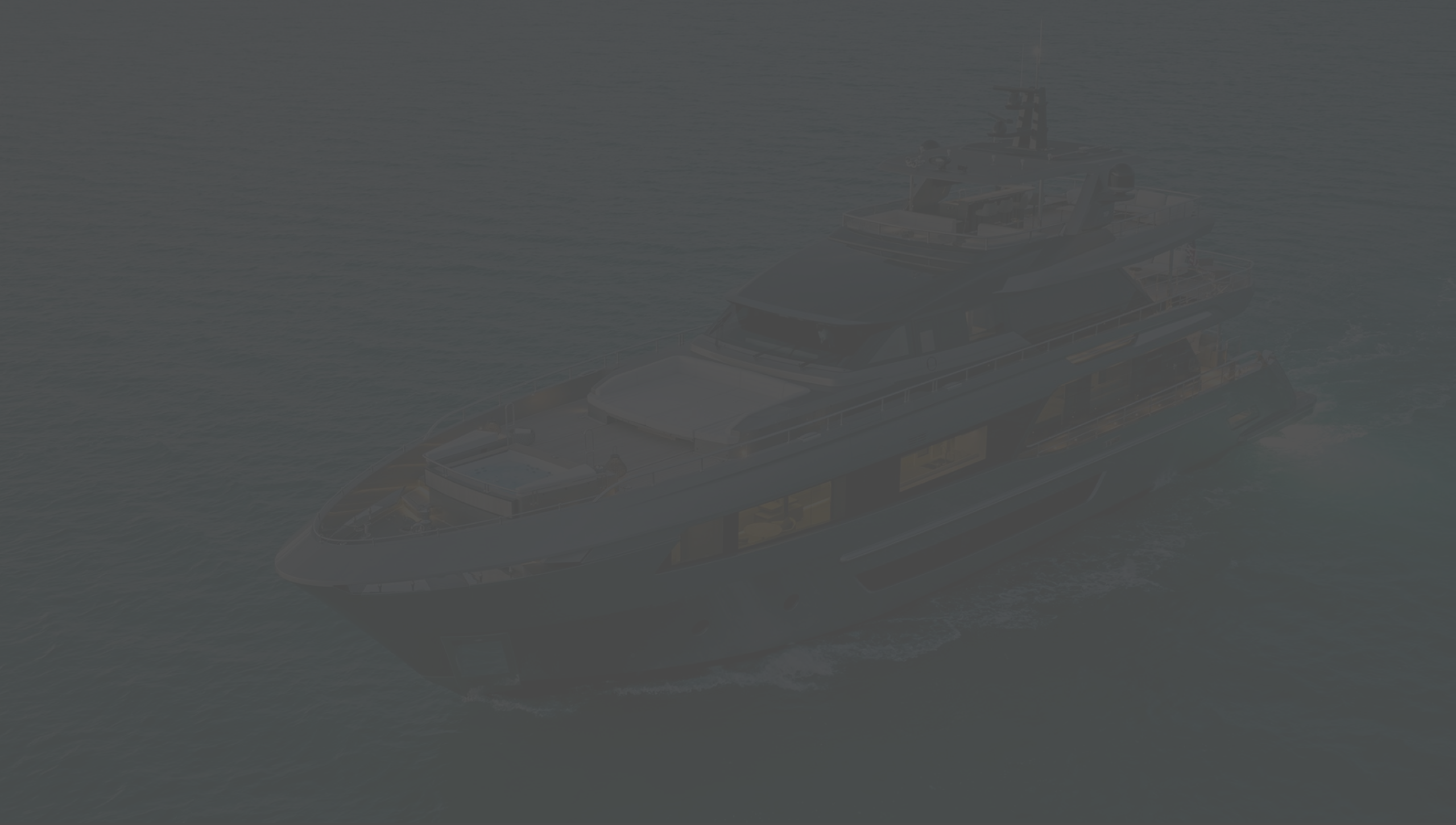
Well integrated into the yacht’s profile, the sun deck is larger than meets the eye
A wide opening door creates a pleasant flow between inside and outside
The owner’s stateroom offers lots of space and privacy
The nearly 4-metre wide Z-lift platform supports up to 2,300lb
Sliding twin beds provide flexibility
A tender garage instead of a beach club is an option
LOA 34.6m | Gross tonnage |
LWL 29.1m | Engines |
Beam 7.7m | Generators |
Draft 2.3m | Speed (max/cruise) |
Range at 11 knots | Owners/guests 10 |
Fuel capacity | Freshwater capacity |
Tender (for lower-deck garage option) Williams 520 SportJet | Crew 5-6 |
Naval architecture | Classification |
Exterior and interior design | Builder/year info@ocean alexander.com oceanalexander.com |

